|
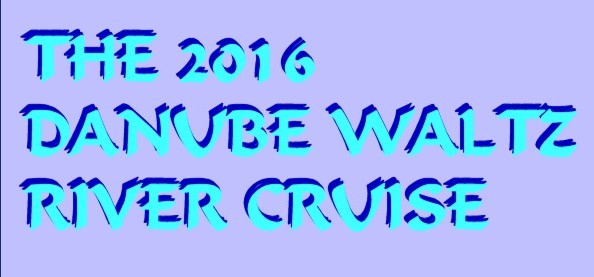
April 09-April 16
|
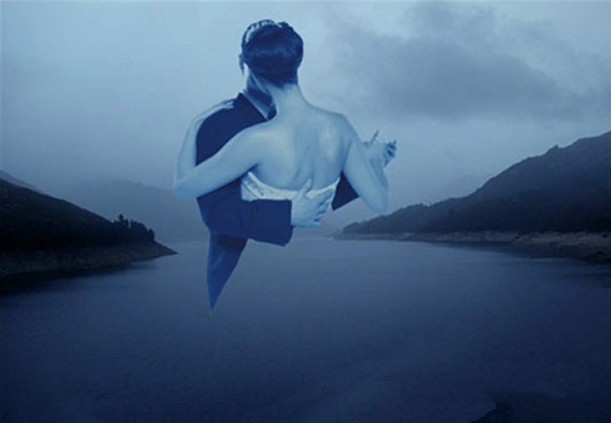 |
|
2016
Danube Waltz Itinerary
|
|
April 09: Day 1 |
Saturday |
Passau,
Germany |
|
April 10: Day
2
|
Sunday |
Passau,
Germany |
|
April 11: Day
3
|
Monday |
Linz and
Český Krumlov, C.R. |
|
April 12: Day
4
|
Tuesday |
Melk and
Dürnstein, Austria |
|
April 13:
Day 5
|
Wednesday |
Vienna,
Austria |
|
April 14: Day
6
|
Thursday |
Bratislava,
Slovakia |
|
April 15: Day
7
|
Friday |
Budapest,
Hungary |
|
April 16: Day
8
|
Saturday |
Budapest,
Hungary |
|
After the trip concludes, why
not extend your trip with a two-day stay in Budapest? |
|
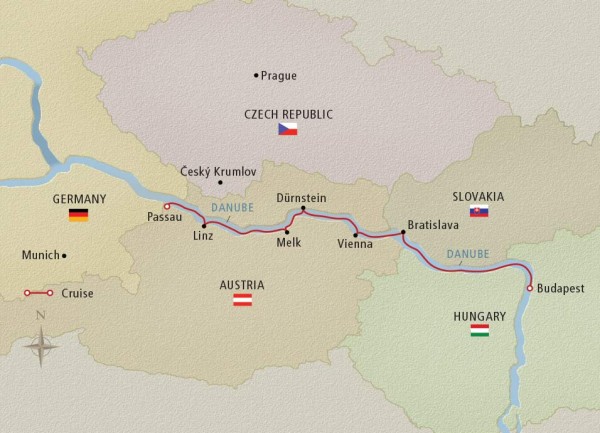 |
|
 |
|
About the Danube Waltz River
Cruise |
| |
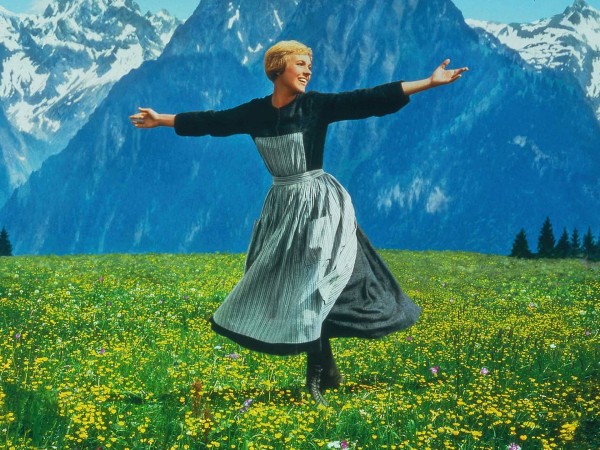 |
Rick Archer's Note:
The Danube Waltz
Cruise will be Marla's third river cruise.
When people
think of Austria, their first impressions include the
Sound of Music, the Viennese Waltz, and, in
particular, the Blue Danube Waltz written by
Johann Strauss.
If you have
never been on a river cruise, I can say there is something
very special about these trips. On a river cruise, you
can sit in a chair at the front of the ship and prepare for
a spectacle. Gaze in awe as a neverending tableau of
beautiful landscape unfolds before your very eyes!!
There is nothing
to spoil your view or your concentration. No
billboards, no sounds of the city, and no litter exist to
irritate. Instead, there is strictly peace, beauty and
serenity. If you wish, turn on your head set and
listen to the musical strains of Mozart and Strauss as you
float merrily along. And perhaps a glass of wine??
Enhance your experience with your choice of Austrian wines
such as Riesling, Grüner Veltliner, or Prosecco.
Some say a river
cruise might be the most perfect vacation of all. You
won't get any argument from me. This 300 mile sail
along the most lovely river in Europe is incredibly
inviting.
|
In the case of
the fabled Danube River, it is the second longest river in
Europe after the Volga in Russia. The Danube starts in
the Black Forest mountains of southwestern Germany and flows
for some 1,770 miles (2,850 km) to its mouth on the Black
Sea.
Along its course
it passes through 10 countries: Germany, Austria, Slovakia,
Hungary, Croatia, Serbia, Bulgaria, Romania, Moldova, and
Ukraine.
From its first recorded history as the northern border of
the Roman Empire, the Danube has formed the boundary between
great empires. One need only look at its banks lined
with castles and fortresses to know the Danube has long
served an important military purpose. In addition, its
waters have served as a vital commercial highway between
nations.
Thanks in large
part to the incredible natural beauty of the river, the
river’s majesty has long been celebrated in romantic music.
The famous waltz An der schönen, blauen Donau
(1867; The Blue Danube), by Johann Strauss, became the
symbol of imperial Vienna and has remained emblazoned there
ever since.
|
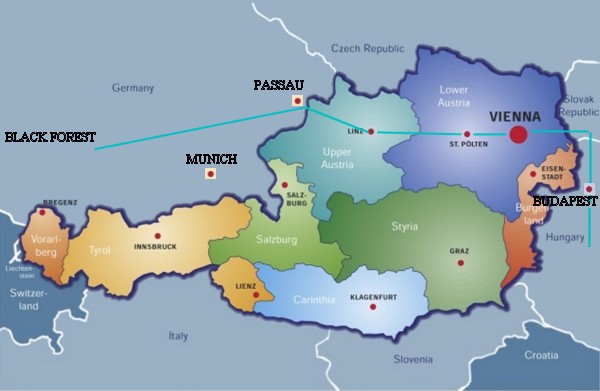 |
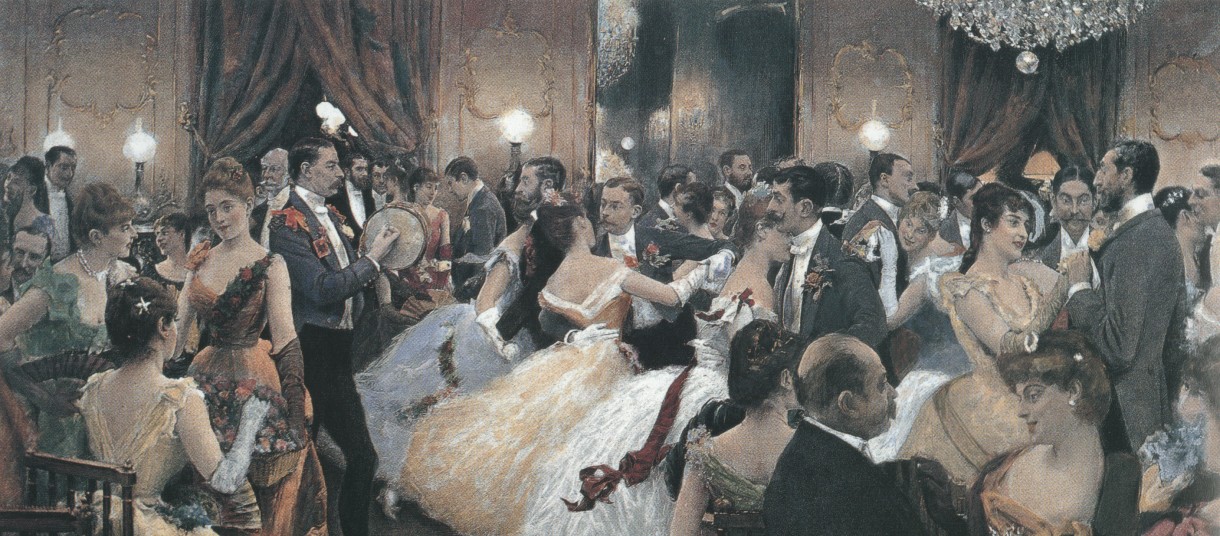 |
The
History Of The Viennese Waltz
By Melanie
LaPatin (source)
The product of a more elegant age,
the Viennese Waltz was introduced in
Vienna in the early 1800s.
Immediately the dance was roundly
condemned in England.
The Times of London
had this to say about the Prince
Regent's grand ball in 1816,
We remarked with pain that the
indecent foreign dance called
the Waltz was introduced (we
believe for the first time) at
the English court on Friday last
it is quite sufficient to cast
one's eyes on the voluptuous
intertwining of the limbs and
close compressor on the bodies
in their dance, to see that it
is indeed far removed from the
modest reserve which has
hitherto been considered
distinctive of English females.
So long as this obscene display
was confined to prostitutes and
adulteresses, we did not think
it deserving of notice; but now
that it is attempted to be
forced on the respectable
classes of society by the civil
examples of their superiors, we
feel it a duty to warn every
parent against exposing his
daughter to so fatal a
contagion.
Of course, we now know such
condemnation did not deter the upper
crust from eventually indulging in
the Viennese Waltz.
The renowned German author Johann
Wolfgang von Goethe wrote,
Never have I moved so lightly. I
was no longer a human being. To
hold the most adorable creature
in one's arms and fly around
with her like the wind, so that
everything around us fades away.
|
When Lord Palmerston of England gave
the royal stamp of approval by
dancing the Viennese Waltz in
public, the rest of English Society
joined in for a brief spell.
That changed in 1914.
When World War I broke out, the
waltz orchestras left England due to
the fact that they were largely made
up of Austrian musicians.
Nothing of Germanic origin was in
vogue due to the war. The Viennese
Waltz pretty much died out as
England and Germany battled each
other and the entire world joined in
the fight. Only the Slow Waltz
variation that originated in England
continued beyond the Austrian
borders.
Over the next thirty years, Austria
kept this faster form of Waltz alive
as a folk dance.
After the end of the Second World
War, the original Viennese Waltz
made a resurgence. Since then,
the Viennese Waltz has remained one
of the staples of ballroom dance to
this day. It is a dance that
requires a great deal of stamina as
the dancers twirl constantly around
the floor at a dizzying pace.
In America, Dr. Lloyd Pappy Shaw,
who revived the Square Dance in the
early 1900s, wrote,
In close embrace, the dancers
turned continually while they
revolved around the room. There
were no steps forward or back,
no relief, it was all a
continuous whirl of pleasure for
those who could take it.
The Viennese Waltz remains
essentially the same today as when
it was introduced two centuries ago,
and some of the greatest composers
have written the most beautiful
music in the world to accommodate
the dancers. For this reason, the
dance echoes the glories and the
romance of a more genteel age.
|
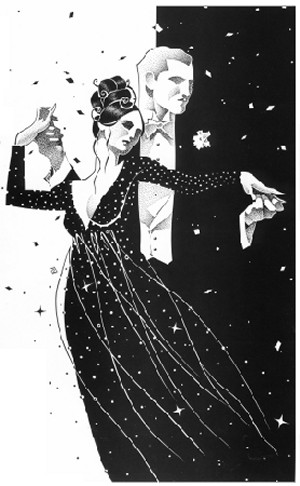 |
|
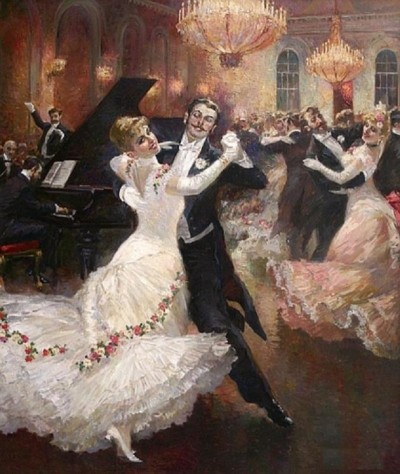 |
Rick' Note: Although it takes a bit of
practice, the basic steps of Viennese Waltz can be mastered
easily enough. The major drawback is the rapid speed
of the music. For you Texans, the Viennese Waltz is
like a fast Polka. If you've got the stamina, the
Waltz with its wonderful swirls and twirls is a beautiful
and quite elegant dance.
Although our
trip will take place just after the traditional season of
the elaborate Austrian Waltz Balls, I am guessing that there
is some place we can find during our stay in Austria that
will allow us to dance the Viennese Waltz.
To get us in the
mood, I intend to offer a month of free Waltz classes to
anyone signed up for the trip. Perhaps a more
gentle-paced Viennese Waltz song can be located so we don't
have to be panting all the time.
When the trip
begins, it is my strong desire through the magic of
miniaturization to bring a portable sound system.
Hopefully I can find one capable of providing enough volume
to allow us to dance the moment we find a suitable dance
floor.
Marla tells me
that part of our agenda in Vienna will take us to a place
where the Viennese Waltz Balls are held. If
that's the case, out of our backpacks will emerge amplifiers
and we will have our very own Viennese Waltz flashdance on
the spot!
However, if
worse comes to worse, we will clear the top of our ship and
dance the Waltz right on top of the Danube River itself!
And then we will all strike a pose and be beautiful for our
pictures! Where there's a will, there's a way.
|
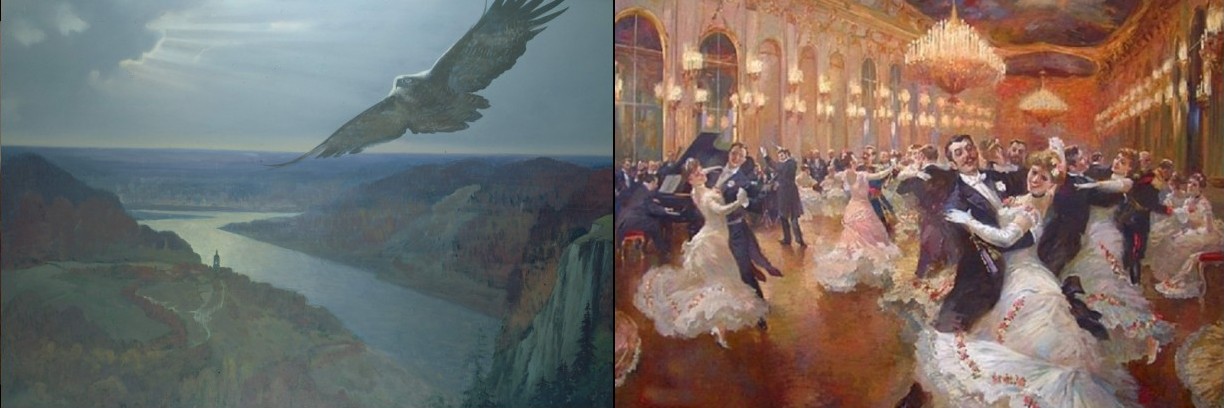 |
Austria, Land of the Castles
|
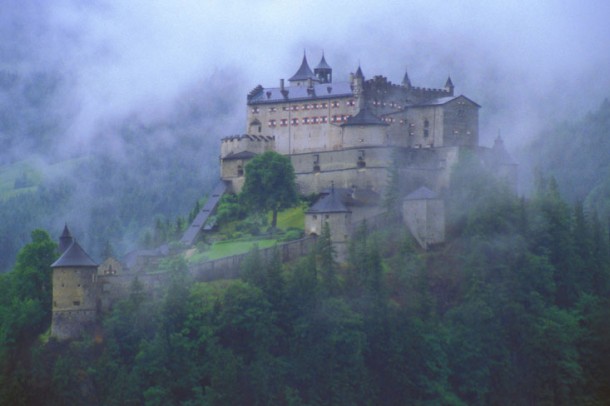
The
magnificent Hohenwerfen Castle
|
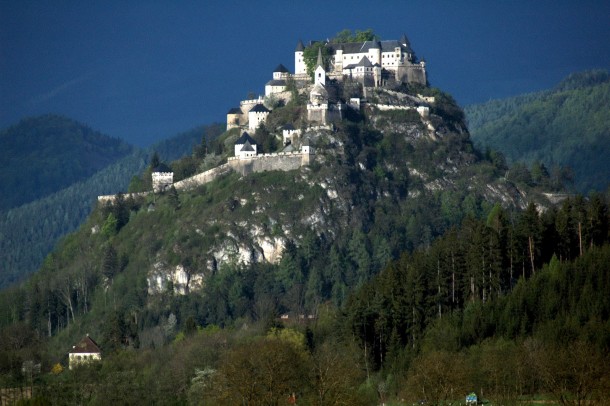
The
incredible Hochosterwitz Castle
|
The only thing
more imposing than a castle by the river is a huge castle
high atop a mountain!!
This Danube
River Cruise isn't just about Waltzes. For you guys,
this trip is about Castles as well. Austria has some
of the most famous castles in the world.
If your lady
objects to visiting a castle with you, tell her that Castles
can be romantic too. For example, how about a
unique Valentine's
idea for your loved one?
Prince-Archbishop Wolf Dietrich had
the magnificent
Mirabell Castle built for his
beloved Salome Alt in 1606.
This fabulous
castle in the sky must have done the trick because
Salome went on to bear the
archbishop some 15 children.
Reputable
sources disagree on the exact number - poor
Archbishop Wolf was presumably too
distracted by spiritual matters to keep
an accurate account himself. That
said, an argument can be made that the more impregnable the
castle is, the more pregnable the lady becomes...
|
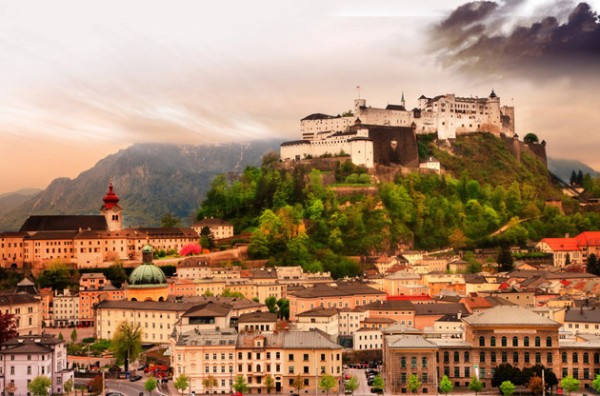
Mirabell
Castle dominates the Salzburg landscape
|
Below
is a look at
the spectacular Schlögener Loop.
Although the
picture shows an amazing U-Turn, if one looks down from
above, this is actually a gigantic S-Turn.
This amazing
formation is about 20 miles east of Passau, the starting
point for our trip. The beauty of a river cruise is
that it gives a perspective that cannot be appreciated from
a car or a land point. There are simply places a
highway can't reach.
Similar to a
trip through the Panama Canal, the Danube River cuts through
a constant maze of unfolding scenery that is virtually
inaccessible by car. So why bother renting a vehicle?
Fortunately,
there is a much better option. Why not sit back on the
viewing deck of your river boat? From the comfort of a
rocking chair, you can take in the amazing scenery with your
friends, your camera, and a glass of wine for accompaniment.
|
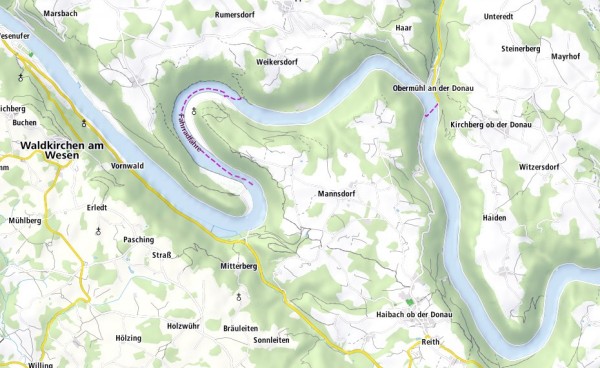 |
|
|
AN
INSIDER'S LOOK AT THE DANUBE WALTZ RIVER CRUISE
|
Day One and
Day Two: Passau, Germany
|
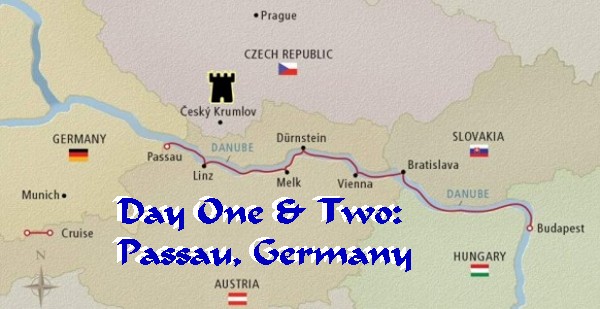 |
| |
|
Known as Dreiflüssestadt (City of
Three Rivers), Passau is the place where the Danube
River meets the Inn and the
Ilz.
At the conjunction point, you can witness
the breathtaking
and unusual view of three rivers coming together in one place.
This picturesque city lies in
Germany’s far southeast corner on the
edge of the Austrian border.
Settled since prehistory and a former hub of the salt trade,
it became the Roman village of Batavis, then later the Holy
Roman Empire’s largest diocese and a sword-making center.
Saint Stephan’s Cathedral, home of the world’s
second-largest cathedral organ, is one of Passau’s favorite
attractions.
Passau's magnificent St. Steven's Cathedral is located on
the old town's highest point. After it had burnt down almost
completely in the devastating 1662 town fire, it was rebuilt
by the famous baroque architect Carlo Lurago. Its stucco
works were done by G.B.Carlone and the frescos were painted
by Carpoforus Tencalla, all of them Italian baroque artists.
With 17974 organ pipes, 233 stops and 4 carillons the organ
in our cathedral is the world's largest cathedral organ. All
five parts of the organ can be played from the main key
board, one at a time or all together, offering the visitor
an unforgettable acoustical delight.
The Old Town of Passau, rebuilt in the 17th century by
Italian baroque masters after a devastating town fire, is
outstandingly beautiful. In the heart of Passau rises the
Cathedral of St. Steven with its three characteristic, green
onion-domed towers.
Most of the sights are in Passau’s Old Town: many churches,
the New Bishop’s Residence, the magnificent gothic Town Hall
and most of Passau’s museums. Picturesque places, romantic
lanes and enchanting riverfront promenades invite visitors
to take a rest and enjoy the beautiful scenery.
The fortress "Veste Oberhaus" in the North and the
Pilgrimage Church "Mariahilf" in the South are enthroned
high above Passau’s Old Town. The fortress "Veste Oberhaus"
was built in 1219 by Passau's Prince-Bishops in order to
control commerce across the rivers.
In the 19th century during the Napoleonic Wars the castle
was one of the strongholds against the Austrians. Due to
several changes over the centuries today's castle consists
of gothic, renaissance and baroque parts. Inside the
fortress you will find outstanding exhibitions documenting
the history and art history of Passau and its surroundings.
In the old town you can find picturesque squares like the
Domplatz, Residenzplatz and Rathausplatz, the church towers
of St.Paul's, the convent Niedernburg (with the tomb of
St.Gisela), St.Michael's, the cathedral and the town hall
tower, romantic nooks and crannies and enchanting footpaths
along the Danube and Inn.
|
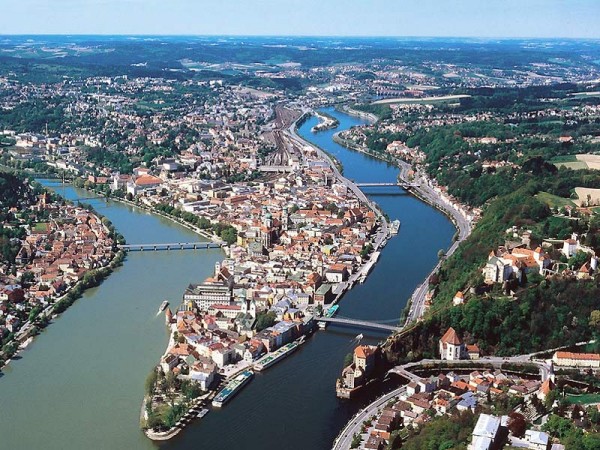
The
city of 3 rivers: On the right the Ilz from Poland, center
the Danube from Germany, on the left, the Inn from
Switzerland
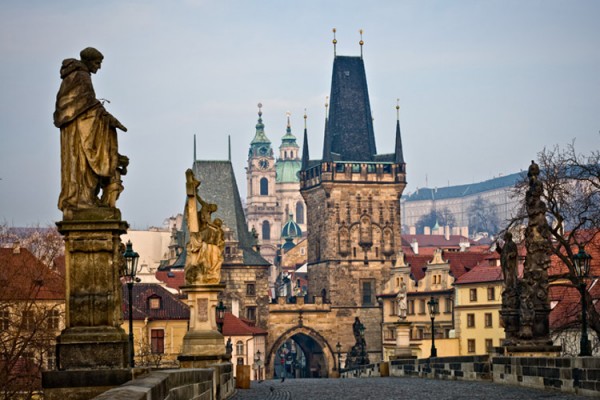 |
 |
| |
Day Three:
Linz, Austria, &
Ceský Krumlov,
Czech Republic
|
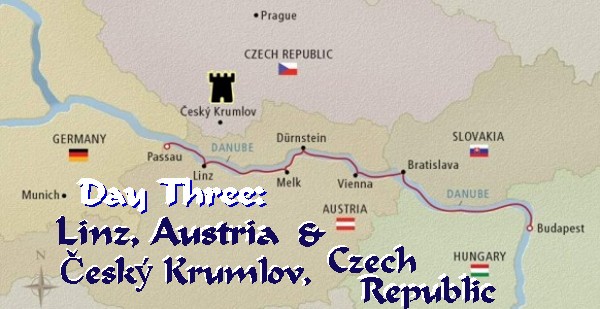 |
The Old City of
Linz is the ideal setting for strolls
through charming cobblestone streets and past centuries-old
architecture. Its spacious Main Square is one of the largest
in Central Europe. The continent's steepest traction railway
takes you on a leisurely ride up Pöstlingberg for a
panoramic view of the city; when the visibility's good, you
can see all the way to the Alps.
And what better way to follow that
up than with a boat ride on the beautiful blue Danube?
Needless to say, culture and scenery aren't all that Linz
has to offer. One of Austria's most popular shopping
districts is right in the heart of downtown Linz. And when
you're ready for a refreshing break, consider dropping in on
one of Linz's many gemütliche cafés and trying a
world-famous Linzer Torte
Český Krumlov
is a small city in the South Bohemian Region of the Czech
Republic. Located 35 miles due north of
Linz, the town is particularly known for the
Český Krumlov Castle,
second largest castle in the country.
Český Krumlov
is an excellent example of a
small European town dating from the Middle Ages.
The citizens have made an effort to preserve the ancient look.
Due in large part to a relatively peaceful history,
the town has retained its entire medieval layout and most of
its historic buildings relatively intact.
Český Krumlov
grew up around the meandering
Vltava River.
Indeed, this wildly curving river with its twists and turns
provides a natural setting of great beauty.
The site is located on an ancient east-west communication route at a
crossing of the Vltava River. The
earliest documented record
goes back to 1253 AD.
It refers to the existence there of a castle belonging to a
member of the ruling Vitkovici family of south Bohemia.
The core of the castle (Hradek)
dates from the 13th century. The castle
became the seat of the influential Rožmberk family for 300
years from the mid-14th century.
The Gothic castle was reconstructed in
Renaissance style, with the involvement of leading artists of the
period. The caste features an impressive
round tower in the Gothic Hradek style.
A later addition
featured a lovely garden.
The wealth and importance of the town is
reflected in the high quality of many of the burgher houses, as the
presence of the seat of government led to Český
Krumlov becoming an important craft and trade centre. There
was also considerable ecclesiastical development, illustrated by the
major 15th-century church of St Vitus and monasteries of various
preaching and itinerant orders. The town later passed to the equally
influential Schwarzenberg family, and it retained its importance
well into the 19th century.
|
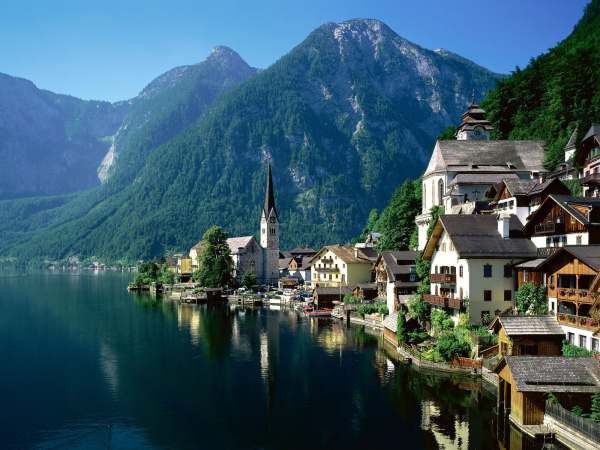
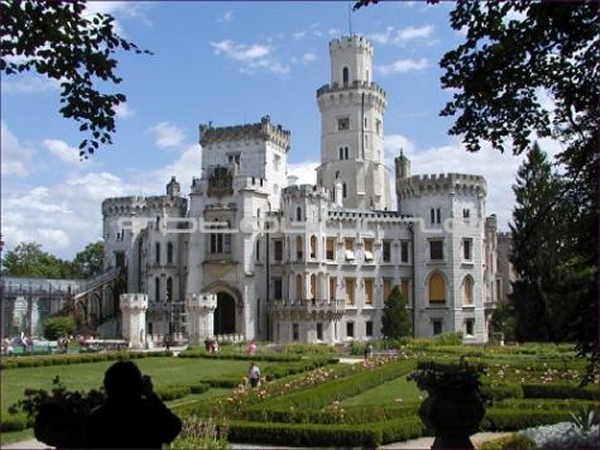 |
| |
|
Day Four:
Melk and
Dürnstein
Featuring
the stunning Wachau Valley
|
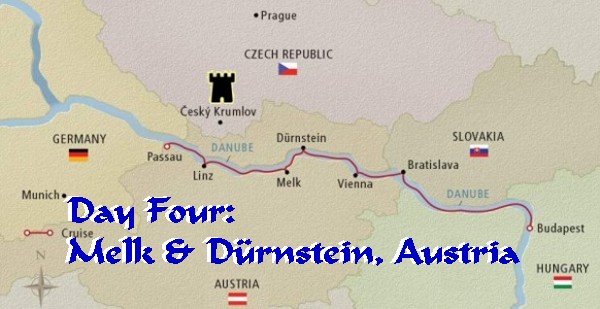 |
| |
|
The small, quaint Austrian city of
Melk lies along the banks of the beautiful Danube
river, near the stunning Wachau
Valley. With a population of just under six thousand
citizens, life is laid back here, making it an ideal port of
call on any river cruise.
Melk's history as a marketplace dates back to 1227, and
because of this early trade, the town boasts some incredible
architectural examples that are representative of many
different periods throughout history.
One of the more famous
structures is the imposing Stift Melk, an impressive
Benedictine monastery perched high atop a hill overlooking
the Danube and our river cruise ship.
It takes around 15 minutes to cross from one end of town to
the other, so don't be afraid to wander and explore every
street and laneway you see. There's no getting lost in Melk!
Melk Abbey was originally a palace, and it shows. Located on
the bank of the Danube River between Salzburg and Vienna,
the Melk Abbey stands crowned by towers and resplendent in a
golden hue.
The impressive Baroque ensemble at Melk was built in
1702-1736 by architect Jakob Prandtauer. Especially
noteworthy is the church with magnificent frescoes by Johann
Michael Rottmayr and the library containing countless
medieval manuscripts.
The monastic community of Melk is over 900 years old and
black-robed Benedictine monks still stroll amidst the marble
sculptures and frescoed walls. It is now also a prestigious
coed monastery school with more than 700 students.
The library rises two floors and also has a Troger ceiling,
along with around 80,000 volumes of priceless works. The
Emperors' Gallery stretches for 650 ft., decorated with
portraits of Austrian royalty.
The highlight of the abbey, though, is certainly the Abbey
Church. The church has an astonishing number of windows and
is richly embellished with marble and frescoes by Johann
Michael Rottmayr with help from Troger.
There are fine views of the river from the abbey's terrace,
which Napoleon probably used as a lookout when he used Melk
as his headquarters for his campaign against Austria.
Located along the famous Danube in Lower Austria,
Dürnstein is well-known for its wineries and is one of
the most popular tourist destinations in the Wachau region.
The city's name literally means "dry castle" in German,
presumably after the stone castle situated high above the
main town area.
Dürnstein Castle's stone remains can still be seen to this
day, situated at the top of the hill overlooking the town.
While the structure is a shell of its former self, it
doesn't take a lot of imagination to envision what this
imposing structure must have been like in its heyday a
millennia ago.
The town was first mentioned in 1019 and gained notoriety in
late 1192 when Richard the Lionheart was held captive in the
castle by Duke Lepold V of Austria. It was officially made a
town in 1476, and is well-known for the 1805 Battle of
Dürnstein that took place just outside the city.
This sleepy little town is a paradise for those who enjoy
getting out on foot, and nearly all the town's major
attractions (with the exception of the old castle) are
easily accessible. Enjoy wandering the streets of this
beautiful town, and don't be afraid to get lost! Much like
Venice, you can never really be lost in Dürnstein.
Dürnstein is known for its wineries, and you should not miss
a chance to enjoy some of the local wines. Of particular
note are the regional Reislings, which are prized for their
high quality.
The Wachau
Valley is a picturesque landscape formed by the
Danube river. It is one of the most prominent tourist
destinations of Lower Austria, located midway between the
towns of Melk and Krems that also attracts "connoisseurs and
epicureans" for its high-quality wines.
Our 60 mile trip
through the Wachau Valley will be one of the special moments
of our Danube River Cruise. With mountains on
either side, a neverending tableau of castles, cathedrals,
monasteries, wineries and forests awaits to entertain us.
Then when we
exit the valley, we will be on the outskirts of Vienna.
Waltz, anyone??
|
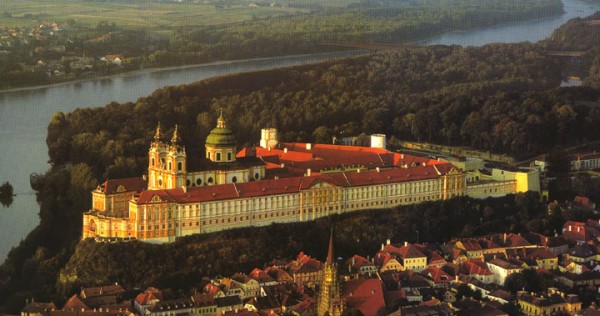
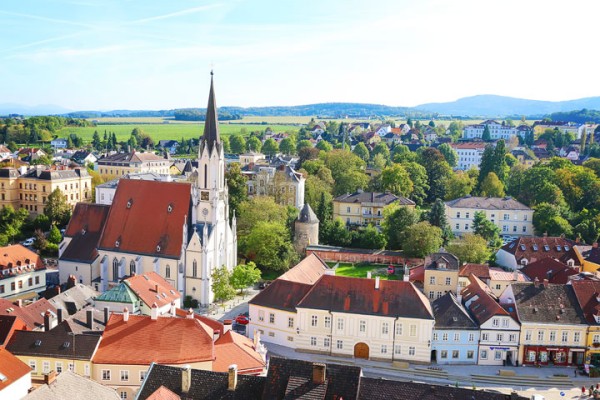
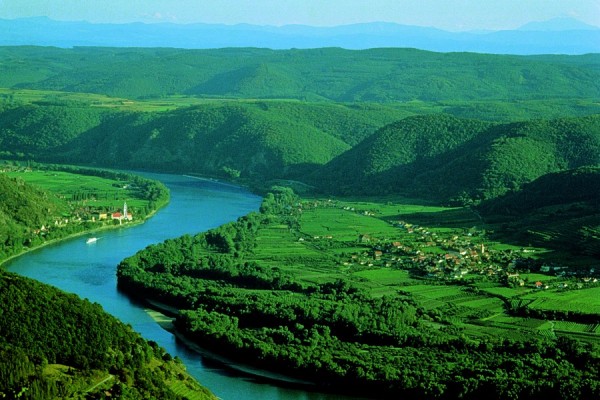
Our
trip through scenic Wachau Valley is one of the highlights
of the Danube River Cruise
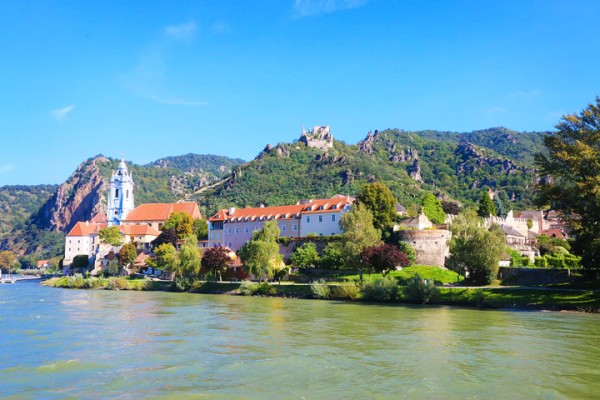 |
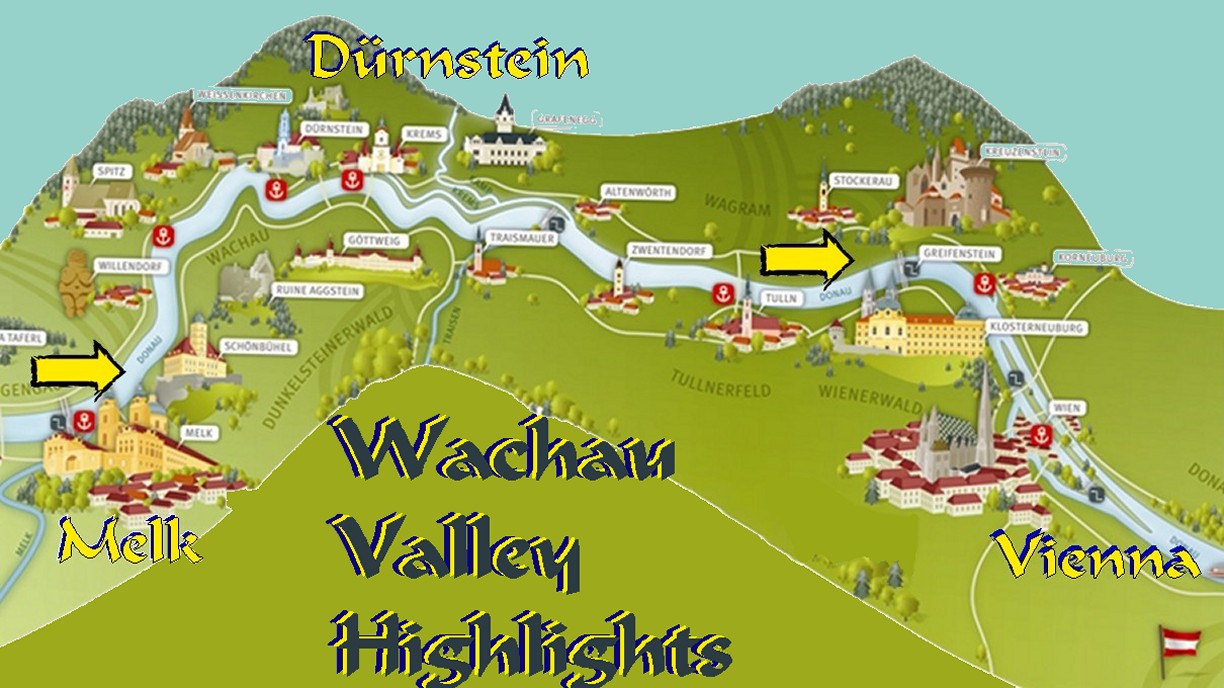 |
Day Five:
Vienna,
Austria
|
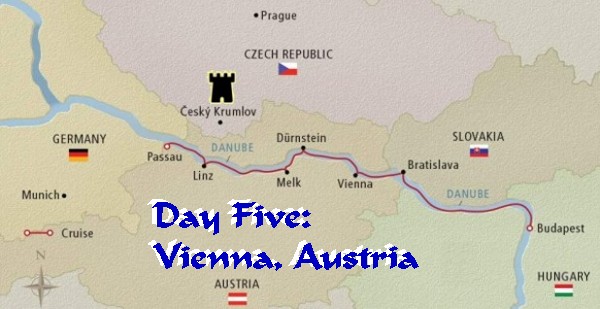 |
| |
|
Vienna,
the capital of Austria, is
famous for cultural events, cozy
wine taverns, imperial sights, coffee houses, and
views of the beautiful Danube River, the
centerpiece of the city.
Vienna's history dates back to the first post-Christian
century when the Romans established the military camp
Vindobona.
Today's cityscape is characterized by the abundance of
baroque buildings created mostly under the rule of Empress
Maria Theresa and Emperor Franz Joseph, who was largely
responsible for the monumental architecture round the
Ringstrasse.
Vienna's Ringstrasse is 5.3 kilometers long. Long
enough to provide space for numerous monumental buildings,
which were built during the period of Historicism in the
1860s to 1890s. Today, the buildings that stand there - from
the Vienna State Opera to the Museum of Fine Arts - are
among the most important sights in the city of Vienna.
Schönbrunn Palace, the former imperial summer
residence, is one of Vienna's most popular sights. The
sumptuous palace with its beautifully tended formal gardens,
the Gloriette monument, Palm House and zoo attracts hordes
of visitors each year.
Schönbrunn Palace is a World Cultural Heritage site and
Austria's most-visited sight. The baroque total work of art
consisting of palace and gardens was for centuries the
property of the Habsburgs and is today largely in its
original condition. Visitors will find numerous attractions
here, from a tour through the authentically furnished
residential and ceremonial rooms of the Imperial Family in
the palace, to the maze and the labyrinth in the gardens and
a separate Children's Museum.
Then there is the huge Hofburg (Imperial Palace),
which was the base of the Habsburgs for over six centuries.
For many centuries, the Vienna Hofburg was the center of the
Habsburg empire. Three museum attractions provide
historically accurate insights into the tradition and daily
life at court: the authentically-furnished Imperial
Apartments, the tasteful Sisi Museum and the Silver
Collection as a comprehensive collection of Imperial
utilitarian objects.
The Imperial Apartments, Sisi Museum and the Silver
Collection are amongst Vienna's top sights, attracting
around 600,000 visitors each year.
St. Stephen's Cathedral defines the city center and
has been the heart of Vienna for centuries. It is one of the
most famous Viennese sights and was built in 1147 AD.
For a long time it was
uncontested as highest building in Europe measuring almost
137 m.
Duke Rudolf IV of Habsburg ordered the complete
restructuring of the church in Gothic style. In 1359, he
laid the cornerstone of the nave with its two aisles. The
South Tower, was completed in 1433 (the Viennese have given
it the nickname "Steffl," representative of the whole
cathedral).
The cathedral has two very impressive features: The gigantic
roof, and the tall, lean tower. (136,7 meters of height).
There are only a few gothic towers of this height that were
finished in the Middle Ages. There are many art treasures
inside the cathedral--the tomb of Prince Eugene of Savoy
(1754), the Altarpiece of Wiener Neustadt, the pulpit by
Anton Pilgram (1514-15), the sepulcher of Emperor Frederik
III by Niclas Gerhaert (1467-1513), the watchman`s lookout,
a self portrait of the sculptor, and the Gothic winged
altar.
The sound of the 'Pummerin', the cathedrals big bell, is
used to celebrate New Year in Austria.
Vienna is packed with imperial history; at the same time it
has exciting contemporary museums, lively eating and
nightlife scenes, and many quiet corners to explore.
Few cities can boast the imperial grandeur of Vienna, once
the centre of the powerful Habsburg monarchy. Lipizzaner
stallions performing elegant equine ballet, the angelic
tones of the Vienna Boys' Choir drifting across a courtyard,
outrageously opulent palaces such as Schloss Belvedere and
Schloss Schönbrunn, and the monumental Hofburg complex - as
a visitor today, you feel grandeur everywhere in Vienna.
It's hard to imagine a more livable city than Vienna. This
is a metropolis where regulars sit in cozy coffee houses and
offer credible solutions to world chaos over the noble bean;
where Beisln (bistro pubs) serve delicious brews, wines and
traditional food; where talented chefs are taking the
capital in new culinary directions; and where an efficient
transport system will ferry you across town from a
restaurant to a post-dinner drink in no time at all. It's
safe, it has lots of bicycle tracks and it even has its own
droll sense of humor.
In Vienna, the old coffee house culture and rustic wine
taverns stand alongside top restaurants and shops, and
time-honored events alternate with internationally-acclaimed
extravaganzas to create a unique and very special ambiance.
All of this, plus plenty of greenspace and recreational
areas including the Wienerwald, the Prater and the Danube
Island make Vienna a very special city to visit.
Vienna is a city where postmodernist and contemporary
architectural designs contrast and fuse with the monumental
and historic. The Museums Quarter is a perfect example, with
modern museum architecture integrated into a public space
created around former stables for the Habsburgs' horses.
Vienna is one the most musical
cities in the world. This is partly due to the vast number
of great composers and musicians who were born here or lived
and worked here. Visiting Austria's capital therefore means
experiencing the works of Mozart, Haydn, Schubert,
Beethoven, Johann Strauss (both father and son), Liszt,
Brahms, Bruckner and many others in venues like the
Staatsoper and Musikverein.
The music of Bach and Händel
continues to be performed in Vienna's historic churches
today, and Vienna's Collection of Ancient Musical
Instruments, paired with a visit to the Haus der Musik,
takes you deeper into the texture of music and how it is
created. Venues for classical music are augmented by some
great clubs and live rock and jazz places.
Vienna owes much of its international fame to the many
celebrated composers who lived and worked here, including
Strauss, Mozart, Beethoven and Haydn. The Vienna
Philharmonic Orchestra is one of the world's best, the State
Opera among the leading opera houses, not to forget the
famous Vienna Boys' Choir.
|
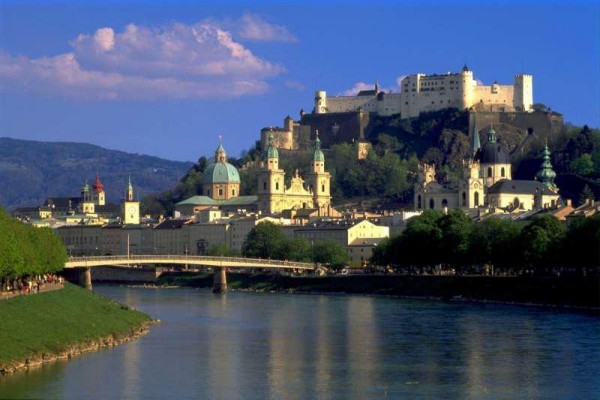
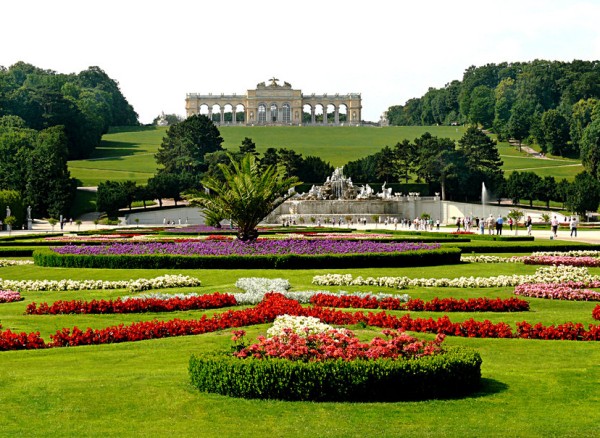
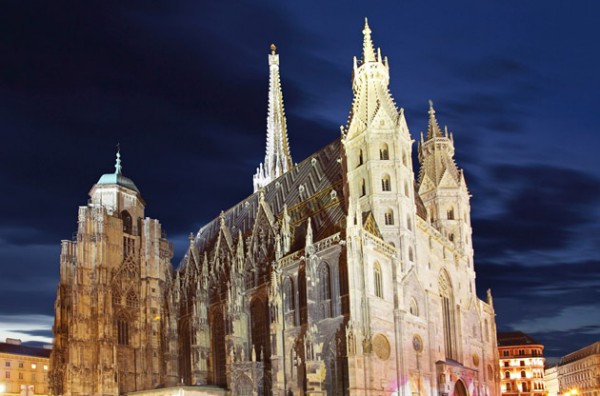
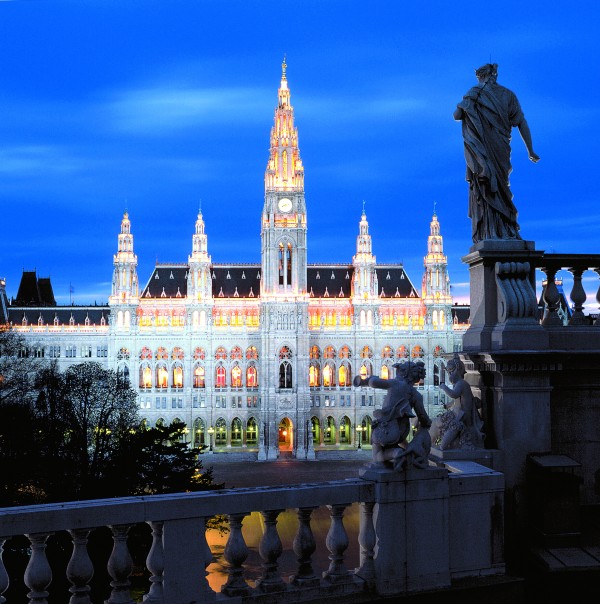
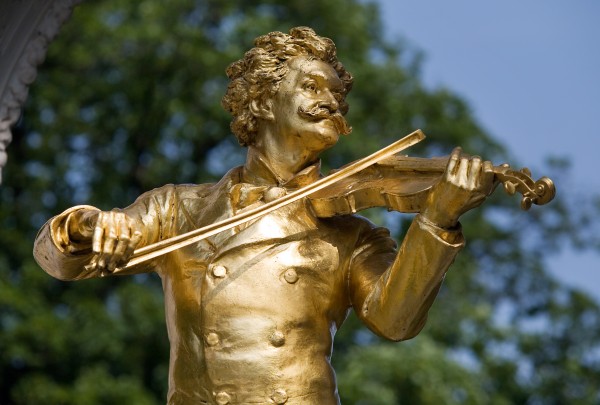 |
| |
|
Day Six:
Bratislava, Slovakia
|
 |
| |
Bratislava, the capital of
Slovakiais, is somewhat smaller
when compared to Budapest and Vienna, but
quickly
becoming a new European metropolis
nonetheless.
The old city and the castle are the best parts of
Bratislava. The old city is packed with museums (such as the
Municipal Museum which comes complete with torture chambers
and the Museum of Wine Production) and palaces (Primate's
Palace and the Mirbach Palace).
The maze of cobblestone streets are mostly limited to
pedestrians. Shade trees and fountains decorate small parks,
and you have an abundant choice of cafes and restaurants,
with outdoor seating in appropriate seasons and places
The castle, built above the Danube, was a frontier post of
the Roman Empire from the 1st to the 5th century. Since the
9th century it has been rebuilt several times, most recently
from 2008.
The oldest surviving remnant, a basilica on the lawn facing
Bratislava's Old Town, dates from the 9th century. The
aristocratic Palffy family completed extensions that make
for today's "upside-down table" appearance of four peaked
corner towers.
In 1811 a fire in what was then a barracks left the castle
an abandoned hulk, and restoration was to start only in the
1950s. Serving briefly as seat of government for independent
Slovakia in 1993, the castle today serves as museum and
special events venue, notably as the site of the Bush-Putin
summit in February 2005.
The castle dominates the centre of Bratislava, towering over
the second-highest point of St Martin's cathedral spire. You
can climb up for the great views and check out the
interesting Slovak National Museum expositions within. The
Natural Sciences Museum of the Slovak National Museum and
the Slovak National Gallery on the river are also worth a
visit.
Eleven kings and eight queens were crowned in Bratislava in
the past. No wonder that the castle is a popular part of
excursions through the city.
History of the Pressburg Castle (as it was named in the
past)
The castle stands on an important crossroad of the ancient
routes. First traces of the settlement on the hill stretch
back to the Stone and Bronze Age. The place had its
strategic geographical importance in the period of the Great
Moravian Empire.
First Hungarian King Stephen I (11th century) ruled over the
empire from his seat inside the Castle. It remained
unconquered during the Tartar raids (1241-1242) and
protected Hungary against the attacks from the west. Also,
since Vienna is right around a corner, the castle provided a
protection for this city too, especially during Ottoman
expansion in the 16th century.
Bratislava became the official coronation town for Hungarian
Kings and the castle became the formal seat of the kings of
Royal Hungary.
Maria Theresa had the castle extensively reconstructed, with
the help of best imperial architects. It was no longer a
fortress, rather a residence and a representative place. She
had a new palace built along with several other buildings
and added new French gardens.
After the Empress and her son Joseph II died,
the castle was deserted and became
a military garrison. In the May of 1811, the fire broke in
the military warehouse. Only ruins were left...
After the WWII, the castle underwent serious reconstruction
and renovation. In 1968, state leaders signed a document
here establishing Czechoslovak Federation. In 1992, new
constitution of independent Slovakia was signed here too.
|
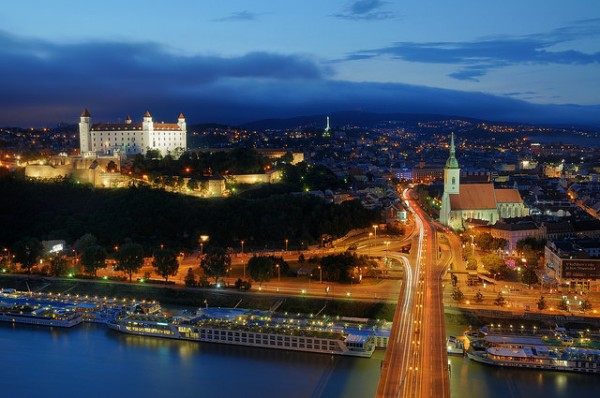
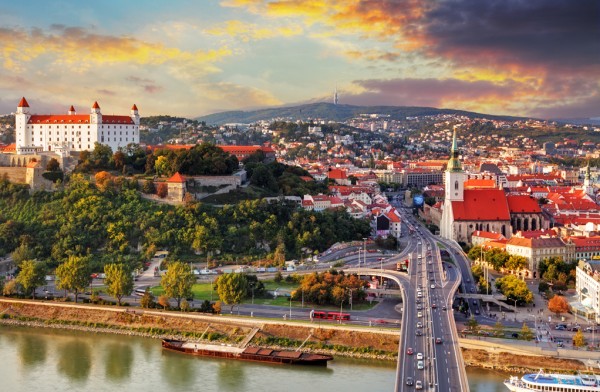
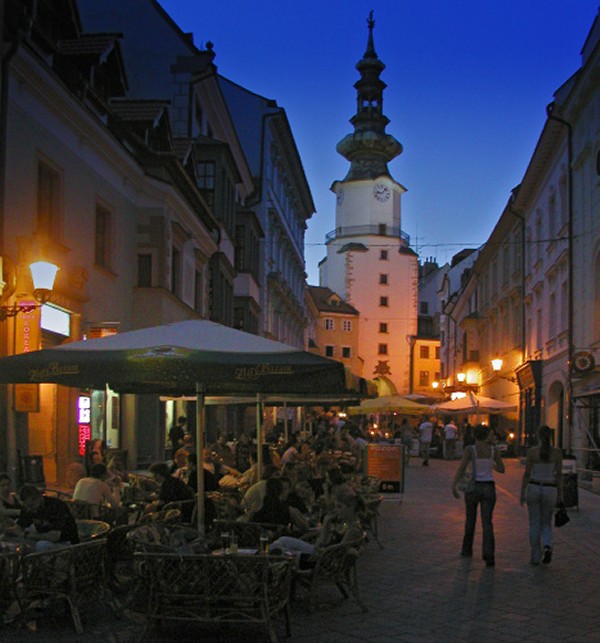 |
Day Seven &
Eight:
Budapest, Hungary
|
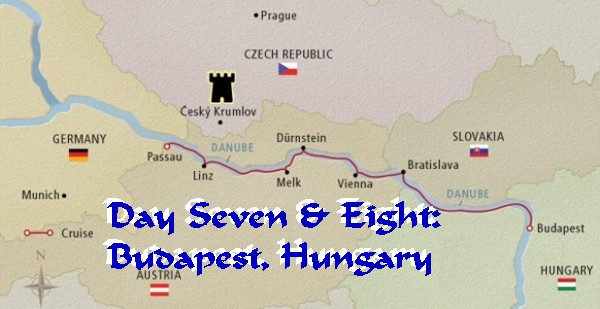 |
| |
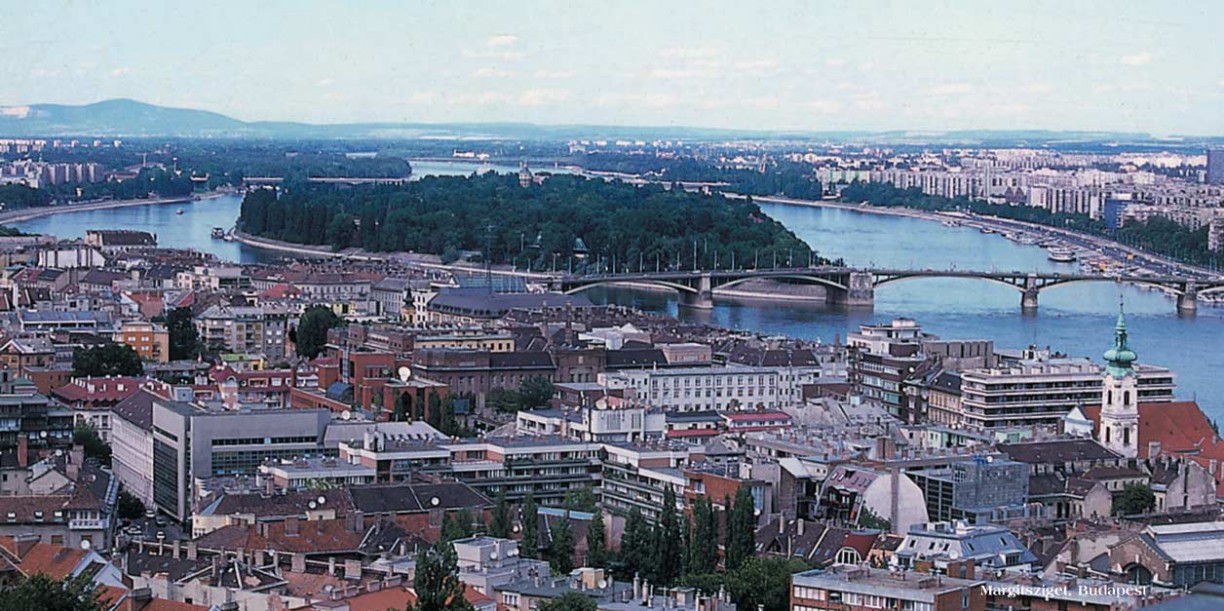 |
Budapest is
famous for its unusual geography created by the Danube
River.
To begin with,
the Danube River splits and reconnects several times to create
three separate islands within the city limits.
The most famous
island is Margaret Island, a major landmark in the
very heart of the city.
Margaret Island
is about 1.5 miles long and 550 yards wide.
The island is heavily forested and contains several landscaped parks;
it serves as a popular recreational area.
Margaret Island
is located at the northernmost point of downtown
Budapest and therefore serves as the entrance to the central part of Budapest.
There
are two Budapests... the modern Budapest and the Old
Town Budapest.
As one
might gather, the most interesting part of the city
is the Old Town where some of us will be staying
over during a post-trip extension.
Old Town
Budapest was actually once two different cities that rested on
separate
embankments on the Danube.
On one side was Pest
and on the other side is
Buda.
Both
sides have wonderful areas to visit. For
example, on the Buda side there is the
Buda Castle and the Castle Hill area
where we will be staying.
On the
Pest side is the beautiful City Park complete
with the War Heroes Statue.
|
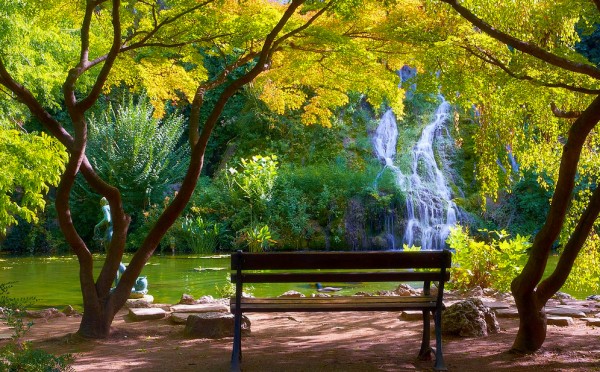
Waterfall on Margaret Island. That's where you
will find Rick and Marla when we reach Budapest.
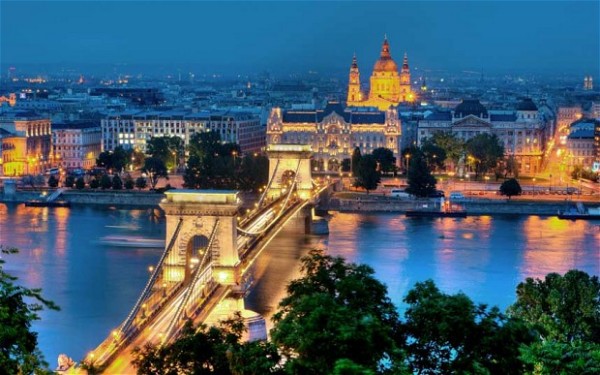
The Chain Bridge
|
To
understand the layout of Old Town quickly, the
central city area
stretches over four major
bridges: Margaret, Chain,
Elizabeth, and Liberty.
In a way
similar to the bridges of Paris that cross the Seine
River, these bridges over the Danube are so
impressive that they serve as landmarks themselves.
The
distance between the four bridges is only two miles
long.
Indeed,
the
central city is so compact that most major tourist
sites are within walking distance. Practically
every landmark can be referenced by which of the
four major bridges it is near.
|
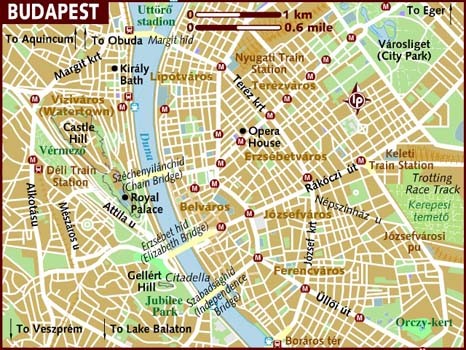 |
|

Parliament
on the Pest Side of the river
|
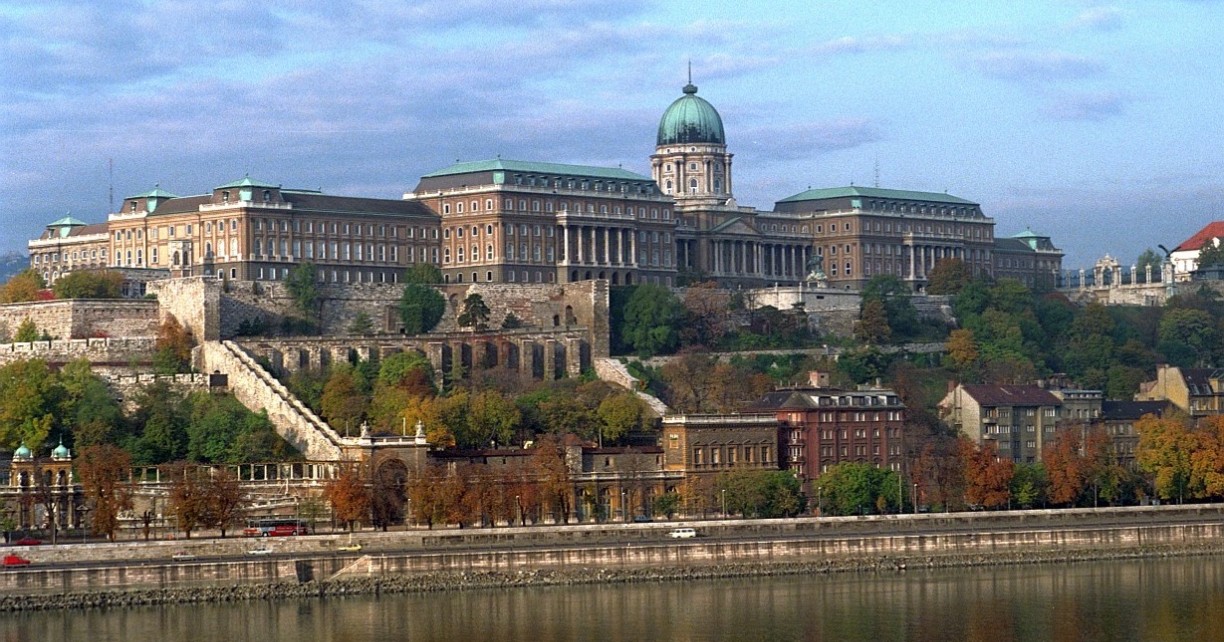
Buda
Castle on the Buda side of the Danube
|
The view of the Danube embankments and the
Buda Castle District is
one of the most beautiful and romantic parts of the city of
Budapest.
The Buda Castle District is an
ancient town that became a World Heritage site on December
11th,1987. It is home
to some of the most important historical monuments in Hungary.
Founded 800 years ago,
its beauty
still stands unparalleled, despite fires, earthquakes, sieges and
world war bombings.
This area is encompassed by the Chain Bridge, the Technical
University, the Gellért Bath, the Gellért Hill with the Statue of
Liberty and the Citadel, the Castle of Buda, the Baroque churches
and Turkish baths of the so-called Water Town. These are all
considered parts of the World Heritage sites today.
Trinity Square (Buda Side)
The most visited site of the Castle District is
Trinity Square.
It is dominated by one of
Budapest's most characteristic buildings, the 700 year old Mathias
Church. Many kings and emperors have left their mark on the church.
The church was converted into a mosque and its walls whitewashed.
Inside lies the sarcophaguses of King Béla the 3rd and his Queen.
The church as you will see it today, was finalized at the turn of
the 19th century.
Several smaller buildings were annexed, and it was renovated in a
Neo-Gothic style.
The Old
Town Hall of Buda is located in
Trinity Square. It became obsolete
when Buda, Pest and Óbuda
(an area north of Margaret Island) were united in 1873.
The Hungarian House of Wines is now
housed in its cellar. You can do some wine tasting here.
In the
middle of Trinity Square, the Baroque-style Trinity statue commemorates
the victims of the 1691 plague epidemic. The right side of the
square is dominated by the Mathias Church, surrounded by the turrets
and walkways of the Fishermen's Bastion.
The right side of the square is dominated
by the Mathias Church, surrounded by the turrets and walkways
of the Fishermen's Bastion.
The Gothic tower of the Mathias Church,
with the Fishermen's Bastion in the background, is one of the most
frequently photographed tourist sites in Hungary.
Many great concerts are held here due to its excellent
acoustic properties.
Fisherman's Bastion
The main façade of the Fisherman's Bastion, running parallel to the
Danube, is approximately 140 meters long. The seven stone towers
with their pointed tops symbolize the leaders of the Hungarian
tribes who conquered the country in 896. It was built in place of
the old fortification walls in neo-Romanesque style between 1895 and
1902 on the plans of Frigyes Schulek, who was also in charge of the
reconstruction of the Mathias Church. The Bastion name comes from
the guild of fishermen that was responsible for defending this
stretch of the city walls in the Middle Ages.
On a personal note, our group will be staying at
a hotel alongside Trinity Square. The Hotel Buda Hilton, where we will
be staying for our two-day post
trip river cruise extension.
The Hotel Buda Hilton was the
first post-war modern international luxury hotel in Budapest,
combining old and new with some success. The courtyard of the hotel
encompasses the ruins a 13th-century Dominican cloister, and inside
are the ruins of a church, where summer theatre performances are
held.
On the Pest embankment of the Danube lies the Parliament building,
Roosevelt Square, the Academy of Sciences and the Gresham Palace
(which today is the Four Seasons Hotel).
There is much, much more to the Castle District than just a royal
palace or a castle. This is where the historical old town district
is situated, with countless venues providing a beautiful panorama of
Budapest. You will get a feeling that you have travelled back in
time, to a different, completely tranquil world of the times of the
knights.
The former Royal Palace is a separate part of the Castle District.
Some of today's most important cultural institutions, such as the
Budapest History Museum, as well as the Hungarian National Gallery,
and the Hungarian National Library, named after the founder Ferenc
Széchenyi have moved to the Royal Palace. The formal residence of
the Prime Minister, the Alexander Palace, is the President's
Residence and home today.
The depths of Castle Hill hide the Buda Castle Labyrinth. The cave
labyrinth's enormous size is best described by the fact that during
WWII, 20,000 German soldiers fit in there. The Buda Castle Labyrinth
can be very dangerous for those who don't know this underworld city,
but it can be safely explored with a proper local guide. Before the
arrival of the Magyars (Hungarians) in the 9th century AD, Celts and
Romans inhabited the area. The royal residence was moved here by Béla the 4th from Esztergom, following the Tatar invasion in
1241-42, because the area was more fortifiable.
Across the Danube, in Pest, stands the predominant House of
Parliament, the Neo-Gothic star edifice by master architect, Imre
Steindl. Not far behind it, is the largest church in Budapest, St.
Stephen's Basilica. Not far from there, at the head of the Chain
Bridge stands the monumental Academy of Sciences. This part of the
Pest side is crowned by the Gresham Palace, which is now Budapest's
most elegant hotel, the Gresham Four Seasons. The wonderful panorama
of the Danube embankment is completed by a row of luxury hotels and
elegant buildings.
Sights not to be missed are as follows:
Andrássy Avenue and War Heroes Square
Heroes' Square along with its surroundings, and Andrássy Avenue with
the Millennium Underground Railway have joined the Buda Castle
District and the view of the banks of the Danube on the UNESCO World
Heritage List in 2002.
Andrássy Avenue, named after former Prime Minister of Hungary Gyula
Andrássy, is two and a half kilometers long and has three distinct
parts. Its downtown section, a 1-kilometre part stretches from
Bajcsy-Zsilinszky Avenue all the way to the eight-sided Octagon
square, which is lined with rows of tall residential apartment
houses and expensive shops. In the middle, from Oktogon to Kodály
Körönd, there are two tree-lined esplanades that run parallel to the
pavement.
The third part, between Kodály Körönd and Heroes' Square lie
magnificent mansions and villas, which create the atmosphere of a
wealthy country town.
The most beautiful avenue of Budapest was developed in 1872. About
ten years later, all the buildings were ready. This is where
Budapest's eclectic architectural heritage is found today. Many
beautifully carved apartment buildings hide mountains, statues and
breathtaking inner spaces and courtyards.
Between Oktogon and Kodály Körönd is a gloomy building, which used
to house the secret police of the Nazis in World War II, and also
the state police of the Communist regime, the dreaded AVH. Today it
is a museum called the House of Terror, commemorating the victims of
these brutal regimes in a permanent exhibition.
The first underground railway of continental Europe, the Millennium
Underground was built under Andrássy Avenue. Used by the public
since the year 1896, it is still an important part of Budapest's
transport system. The line was later extended to be able to
transport people to new parts of the city beyond Heroes' Square in
1973.
Heroes' Square
Heroes' Square, where Andrássy Avenue ends, lies the largest and
most impressive square in Budapest. Here stands the Millennium
Monument, with Archangel Gabriel on top, holding the double cross of
Christianity and the Holy Hungarian Crown.
It was constructed to mark the 1000th anniversary of the arrival of
the Magyar tribes. The pedestal below displays the ornate horseback
statues of the seven Hungarian leaders who led the Hungarian nation
into the Carpathian Basin in 896 AD. The middle of the square is
dominated by the Tomb of the Unknown Soldier, wreathed by all heads
of state when officially visiting Hungary.
The left side of the
Square is bordered by the Museum of Fine Arts, which holds
the world's second largest collection of Spanish Art, on the right
side is the Art Hall, giving home to temporary exhibitions in
Budapest. The entertainment and cultural facilities of the City Park
(Budapest Zoo, Funfair, Municipal Circus, Vajdahunyad Castle, the
museum of Agriculture and Transport, the Pet?fi Cultural Hall and
the Széchenyi Thermal Bath) are among the most sought after tourist
sites in Budapest.
Buda Castle
The first Gothic style palace was built during the reign of Louis
the Great, King Sigismund and King Matthias (from the middle of the
14th century until the end of the 15th). It became a royal residence
of European rank, with its Gothic and Renaissance elements. Buda was
occupied by the Turks in 1541, and it was only retaken during the
Christian siege of Buda in 1686.
The three month siege has ruined both the Gothic castle and the
residential part of today's Castle District. Following the expulsion
of the Turks, the restoration of most buildings was completed in the
then-fashionable Baroque style, using the existing remains of
buildings. The construction of a much smaller Baroque palace was
started in 1715, whose ground area was later extended.
At the end of the 19th century, the place
almost doubled in size, and a large back wing, today housing the
Széchenyi National Library, was added. The architects, Miklós Ybl
and Alajos Hauszmann have decorated the palace with Art Nouveau
elements, in addition to the existing Baroque style.
In WWII, the palace and the Castle District
were the last refuge of the Germany Army, which fell under heavy
siege from the invading Soviet Army.
The palace was again damaged;
reconstruction started in the 1950s. Leading architects of the age
announced that they wanted to return to the 18th century Baroque
form for the palace, and at the same time keep its 19th century
dimensions. They constructed a Baroque façade that never existed
before. This was because 20th century architects saw no value in
eclectic style, although this is now considered to be the most
valuable aspect of Budapest's buildings.
The Budapest Castle Hill Funicular or Budavári Sikló is a funicular
railway in the city of Budapest, in Hungary. It links the Adam Clark
Square and the Széchenyi Chain Bridge at river level to Buda Castle
above. The line was opened on March 2, 1870, and has been in
municipal ownership since 1920.
It was destroyed in the Second World War
and reopened on June 4, 1986. A feature of the line are the two
pedestrian foot bridges which cross above it. These were present
when the line opened, were removed in 1900 when the castle's garden
was extended, and rebuilt to the original design in 1983.
Chain Bridge
With the Buda Castle in the background, the Hungarian capital's
first bridge, now a monument, is a fascinating spectacle that has
attracted many tourists to Budapest. The bridge was built upon the
request of Count István Széchenyi by designer William Tierney Clark
and engineer Adam Clark between 1839 and 1849.
Like many other
Danube bridges, the Chain Bridge did not survive the ravages of
World War II, so it had to be rebuilt in 1949. Visitors also have
the opportunity to walk onto the top of the tunnel located on the
Buda side, offering a marvelous view of the Danube, its bridges as
well as the nicest parts of Pest.
Citadel
The Gellért Hill is the capital's popular excursion place. The
Citadel can also be found here. It used to be a fortress, erected in
1854 by the Habsburg emperors after overcoming the Hungarian army in
the revolution of 1848-49. A unique Budapest panorama, that is part
of the world heritage, can be enjoyed here. Other sights on the
hill: the sculpture of the bishop St. Gellért (Gerard), the St.
Gellért Cliff Church and the Liberty Statue.
Gellért Hill
Gellért Hill, home to the Citadel, is a 235 m high hill overlooking the Danube in
Budapest, Hungary. It is part of the 1st and 11th Districts. Gellért
Hill was named after Saint Gerard who was thrown to death from the
hill. Now an affluent residential area, a number of embassies and
ambassadorial residences line the streets which wind up the hill.
Since 1987, the area is listed as a world heritage site as part of
"the Banks of the Danube".
Gresham Palace
An outstanding piece of Hungarian Art Nouveau architecture.
Completed in 1907 on the plans of Zsigmond Quittner and the Vágó
brothers, it served as the Budapest office of Gresham Insurance
Brokers, London. The first floor used to accommodate the renowned
Gresham Café, where the Gresham Circle, a group of Hungarian artists
held their meetings. Today, Gresham Palace houses the luxurious Four
Seasons Gresham Palace Hotel.
Mathias Church.
The church is officially called The Church of Our Lady, and served
as a coronation church from the 16th century on. Its vast
ecclesiastical collection and treasury is open to visitors. Over the
centuries, the church underwent several major transformations, the
first of which was the addendum of the Mary-gate (Mária-kapu), and
in 1470, the 60-metre south side tower, with the King's raven
ensign, was erected. During the Turkish occupation, the church was
turned into a mosque and its walls were whitewashed; in the 17th
century, it was again rebuilt in Baroque style.
A major renovation was undertaken between
1895 and 1903, by star architect of the age Frigyes Schulek. The
frescoes are the works of famous Hungarian artists such as Károly
Lotz, Bertalan Székely and Mihály Zichy.
Millennium Monument
At the front of the monument is a large
stone cenotaph surrounded by an ornamental iron chain. The cenotaph
is dedicated "To the memory of the heroes who gave their lives for
the freedom of our people and our national independence." While some
guide books refer to this as a "tomb", it is not a burial place.
Directly behind the cenotaph is a column topped by a statue of the
archangel Gabriel. In his right hand the angel holds the Holy Crown
of St. Stephen (Istvan), the first king of Hungary. In his left hand
the angel holds a two barred apostolic cross, a symbol awarded to
St. Stephen by the Pope in recognition of his efforts to convert
Hungary to Christianity. In Hungarian, it is referred to as the
double cross or the apostolic double cross.
At the base of the column is a group of seven mounted figures
representing the Magyar chieftains who led the Hungarian people into
the Carpathian basin. In the front is Árpád, considered the founder
of the Hungarian nation. Behind him are the chieftains El?d, Ond,
Kond, Tas, Huba, and Töhötöm (Tétény).
Little survives in the historical record
about these individuals and both their clothing and their horses are
considered to be more fanciful than historically accurate. The back
of the monument consists of two matched colonnades, each with seven
statues representing great figures of Hungarian history.
Topping the outer edge of the left
colonnade is a statue of a man with a scythe and a woman sowing
seed, representing Labor and Wealth. In the corresponding position
on the right colonnade is a statue of a man holding a statue and a
woman with a palm frond representing Knowledge and Glory.
At the inner top edge of the left colonnade
is a male figure driving a chariot using a snake as a whip
representing War, while on the facing end of the right colonnade is
a female figure in a chariot holding a palm frond representing
Peace.
Pest Redout
The most beautiful concert hall in Budapest is located along the
Danube Promenade in Pest. The Pest Redout was completed in 1865,
replacing an earlier concert hall (designed by Mihály Pollack)
destroyed in the Hungarian War of Independence in 1848-1849. The
style is best described as Oriental and Hungarian Art Nouveau.
Frigyes Feszl, the architect of the new
building, was commissioned to make the plans in 1859 - just six
years after his first major work, the Dohány street Synagogue was
inaugurated (check the similarity between the two onion-domed towers
of the Synagogue and the Vigadó's facade!).
Károly Lotz and Mór Than, star artists of
the age, have painted the ballad themed-frescoes of the interior.
The imposing main concert hall, which can accommodate up to 700
people, is to this day one of the most significant venues of music
life in Budapest. The chamber hall (220 seats) hosts drama
performances, chamber concerts and various other cultural events.
The Vigadó Gallery is one of Budapest's most popular art exhibition
centers.
St. Stephen's Basilica
It is the largest church in Budapest, the
96-metre dome can be seen from virtually all parts of the city. The
Basilica's construction begun in 1851, before being taken over by
Miklós Ybl, one of the leading architects of the time in 1867 and
completed by József Kauser in 1905. The Classicist-style building
houses Hungary's most sacred relic: the Holy Right, which is the
mummified right hand of St. Stephen, after whom the Basilica was
named. Famous masterpieces in the church include statues by Alajos
Stróbl and a painting of St. Stephen offering his country to the
Virgin Mary by Gyula Benczúr.
Shoes on the Danube Embankment
This world-famous composition, which comprises 60 pairs of metal
shoes set in concrete on the Danube embankment, was set up in the
year 2005. It commemorates the Hungarian Jewish victims of the
killings committed by the Arrow Cross militiamen, the pro-German,
anti-Semitic, national socialist party members of Hungary in
1944-1945.
The killings usually took place en masse - the victims
were lined up at the embankment, and shot into the Danube,
execution-style. At three separate places of the memorial, cast iron
signs read in Hungarian, English and Hebrew: "To the memory of
victims shot into the Danube by Arrow Cross militiamen in 1944-45".
This is a very simple but very moving memorial.
Széchenyi Thermal Bath
The Széchenyi Thermal Bath is one of the largest spa complexes in
Europe. It's also the first thermal bath of Pest. The baths were
developed by Vilmos Zsigmondy, a mining engineer.
The Széchenyi Thermal Bath was built in 1913 on the basis of plans
composed by Gyozo Czigler. The Bath was expanded in 1927 with a
public bathing area and a beach site. In the mid 1960s, further
transformation took place, that included the creation of a group
thermal section.
The reconstruction of the pools in the swimming section, their
equipment with water filtering and circulation devices was completed
in 1999. The so-called fancy bath includes a whirling corridor,
underwater effervescence production, neck shower, water beam back
massage installed in the sitting banks and many other services.
Gellert Baths
Part of the famous Hotel Gellért in Buda,
the Gellért Thermal Baths and Swimming Pool is an
impressive bath complex.
The bath complex was built between 1912 and 1918.
It was damaged during World War II, but then rebuilt.
References to healing waters in this location are found from as
early as the 13th century. A hospital was located on this site
during the Middle Ages. During the reign of the Ottoman Empire,
baths were also built on this particular site. The "magical healing
spring" used the Turkish during the 16th and 17th centuries. The
bath was called Sárosfürdo ("muddy” bath), because the mineral mud
settled at the bottom of pools.
|
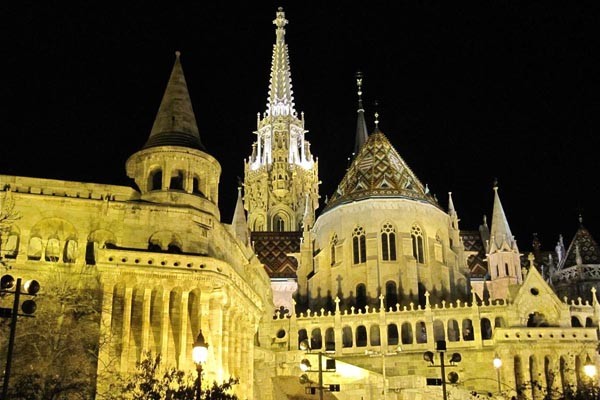
Fisherman's
Bastion in Buda Castle District
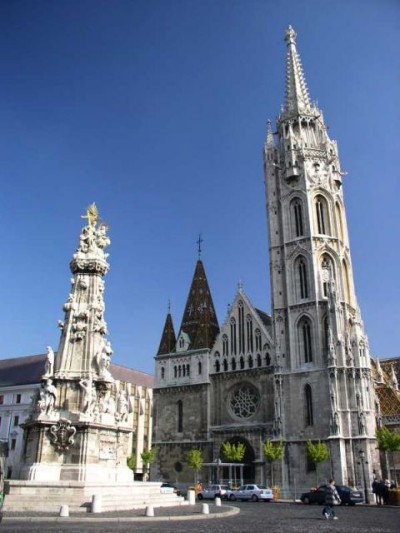
Holy Trinity
Square featuring St. Mathias Church and Trinity statue
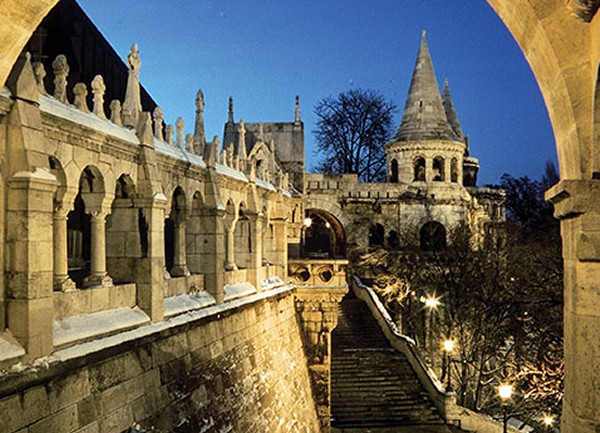
Fisherman's
Bastion
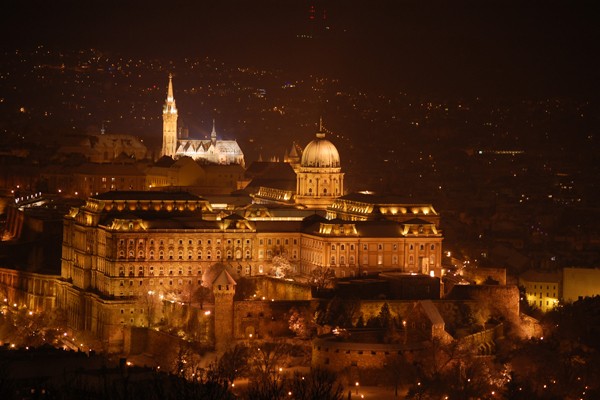
Budapest National
Gallery
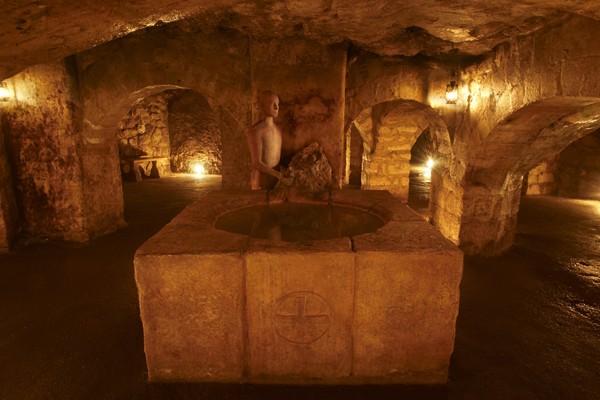
Buda Castle
Labyrinth
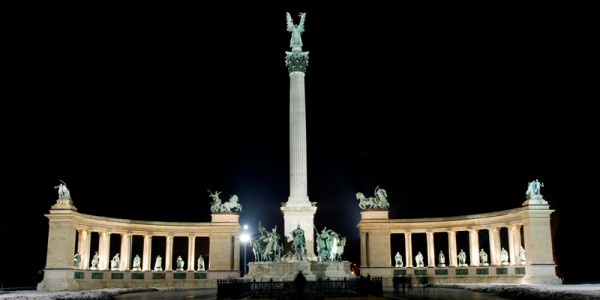
War Heroes
Statue in Hero's Square at the end of Andrássy Avenue
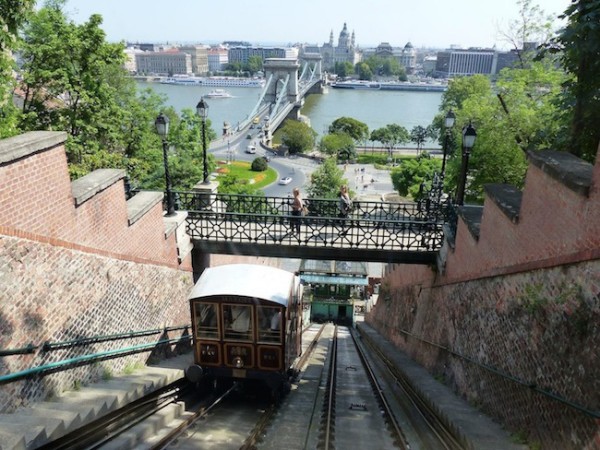
The Funicular —
built in 1870 — runs from the bottom of the
Chain Bridge right to the top, where you’re off and walking
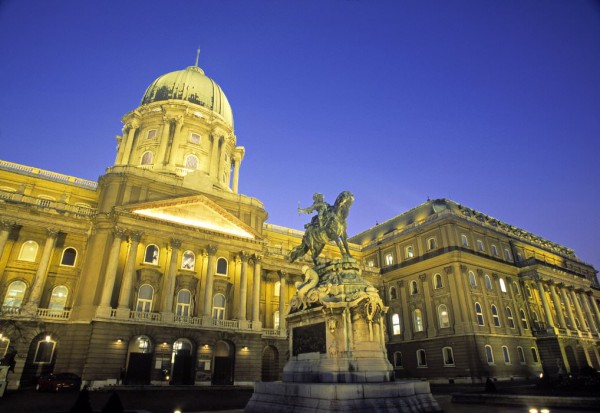
Royal Palace
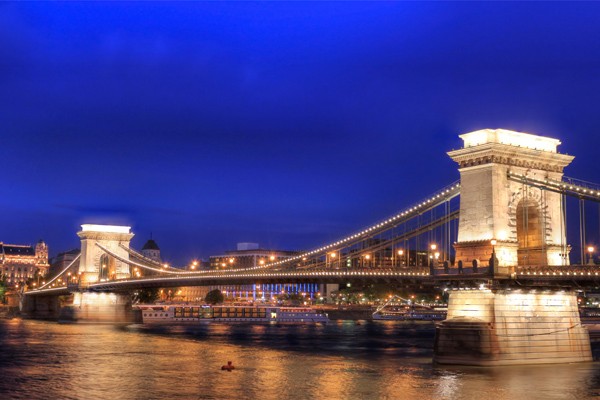
Chain Bridge
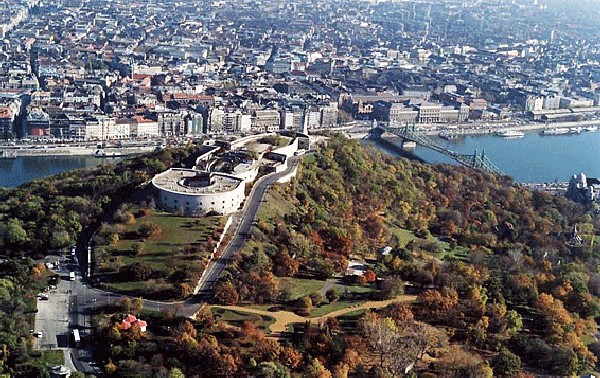
The Citadel atop
Gellert Hill
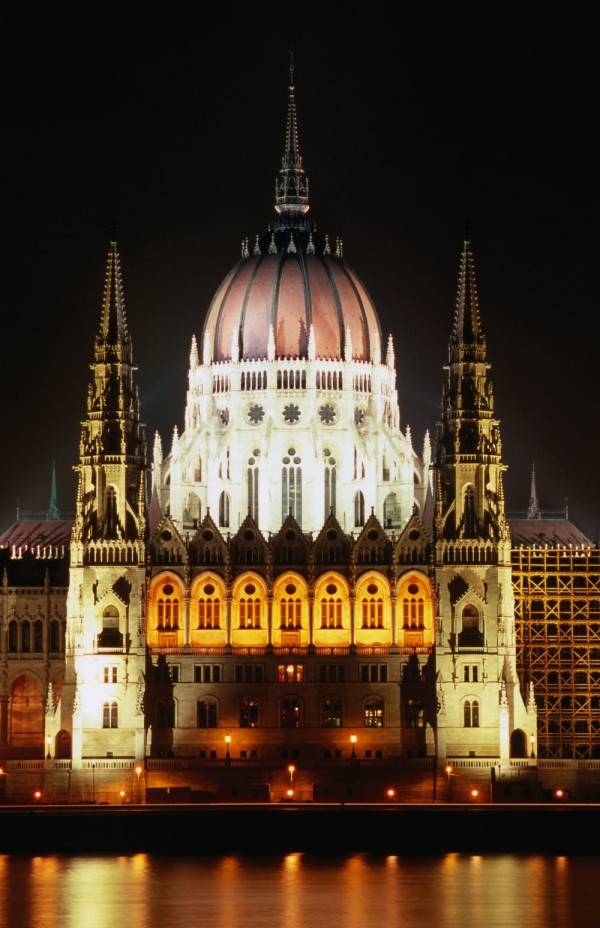
Budapest
Parliament Building
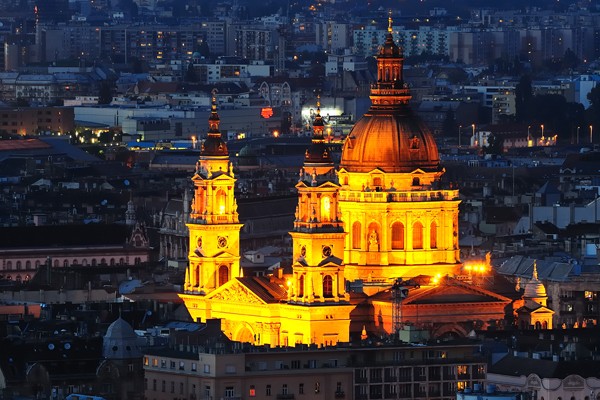
St. Stephen's
Basilica
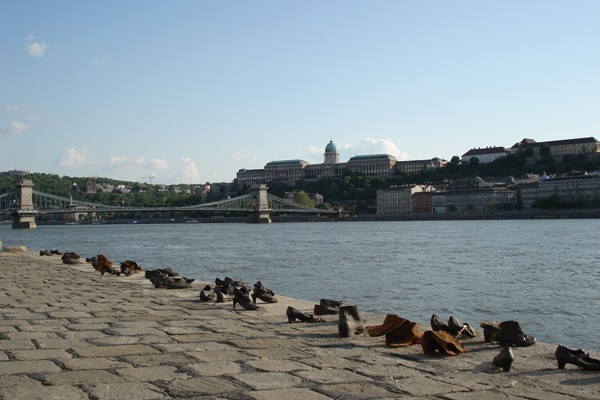
These shoes on
Chain Bridge symbolize the brutal execution of Hungarian Jews during
World War II. The Nazis lined the victims up on the bridge,
shot them in the head, and then laughed as the dead bodies fell into
the river. This place serves as a powerful reminder of a
not-so-happy time in European history.
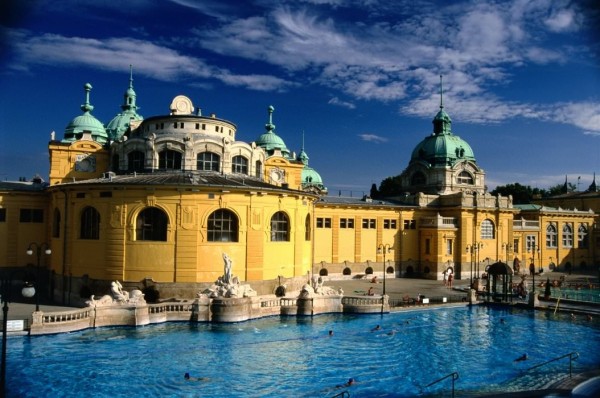
The Szechenyi
Baths
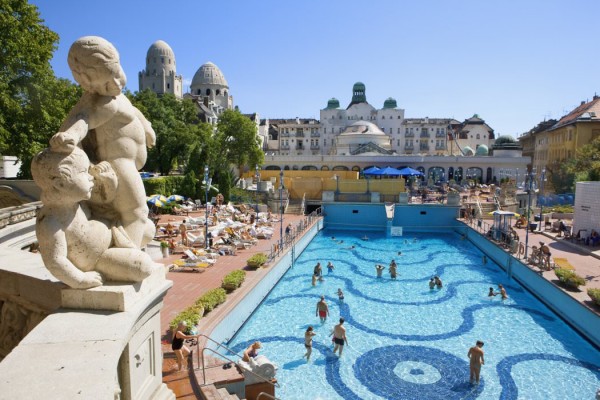
Gellert Baths |
 |
| |
|
Budapest Extension
A Two
Night Post Cruise Extension with Viking at $399 per person
|
| |
Marla's Note:
Rick and I plan to stay in Budapest via Viking's post-cruise
package. In our opinion, there
is far too much to see in Budapest in just one day.
Why not join us and extend your trip? See everything
there is to see in the legendary Hungarian capital
with its elegant boulevards, Parisian atmosphere and
outstanding museums.
Take a stroll in
the parks of Margaret Island, discover the hidden medieval
courtyards of the castle district and eat your fill of savory
Hungarian cuisine.
We will stay for two nights at the
Budapest Hilton right at the foot of the
legendary Chain Bridge. Our stay includes
daily breakfasts and hotel/ship transfers along with the
services of a dedicated Viking concierge.
The Hilton Budapest hotel has a beautiful Baroque façade of a
16th century Jesuit College and a 13th century Dominican Churchyard.
The hotel is set in the heart of the Royal Castle District-a UNESCO
World Heritage Site within the Buda side of the city, next to
Matthias Church and Fisherman's Bastion. Enjoy captivating views
across historic Budapest, the Hungarian Parliament, and Danube
River.
The Hilton Budapest overlooks the Danube River on the Buda
side of the city. The hotel is
within close walking distance of a wide
number of medieval Budapest attractions.
For example, why not stroll along the
neo-gothic terrace of Fisherman's Bastion?
Or stand on Chain Bridge and admire spectacular vistas of the
Hungarian Parliament, Margaret Island, and the Danube River?
Or simply walk next door to Trinity Square and
visit Matthias Church, the
medieval coronation church that dates
back to the 14th Century.
There is so much else to do. Wander
through the winding streets of the Royal Castle District and marvel
at the beautifully reconstructed baroque and neo-gothic
architecture. Visit Buda's Royal Palace or learn about Hungary's
exciting past at Budapest Historical Museum. Admire the impressive
collections at Hungarian National Museum or cross the Danube's
impressive Chain Bridge and explore Pest's bustling city center.
Treat yourself to
authentic Hungarian shopping at Budapest's Central Market Hall or
sip on cool evening drinks at stylish bars and restaurants while
experiencing Budapest's vibrant nightlife.
Day 1| Budapest
After breakfast,
disembark and we take you to the 5 star deluxe Budapest Hilton in
Buda's Castle District and sample some Hungarian cuisine. A Viking
concierge is available to help you plan your Budapest visit. Walk
through Pest and do some shopping along the Váci Utca; cross the
Danube via the famous Chain Bridge to enjoy the hillier Buda
neighborhoods.
Day 2| Budapest
A full day to
further explore Budapest on our own. Tour
the Hungarian National Gallery, the Bartók Museum or enjoy one of
the city's elegant thermal spas.
Day 3| Budapest
After breakfast, check out of your hotel and proceed to the airport
for your return flight.
Viking Air
Marla's Note: This is important. The reason
I recommend buying the Viking Air Package is that your airport
meet and greet transfers are
included when air is purchased from Viking Cruises.
For your convenience, you can purchase roundtrip transoceanic air
travel directly from Viking in conjunction with your river cruise or
cruise-tour. Viking's air packages are a great value because they
include your transfers between airport and ship or hotel.
The hassle-free
Viking Inclusive Air program leaves the complexity of planning air
travel with the air experts. Flight
schedules are sent no later than 75 days prior to departure which
allows Viking to negotiate the best deals and flights for our
guests.
Here is what you get when you purchase Viking Air:
•
Best flights available
• Minimum connection standards, 90 minutes
for large airports (London, Frankfurt, Paris & Rome), 60 minutes for
mid-size airports (Amsterdam, Zurich & Brussels)
• Most arrival and departure times at your
destination range from 9:00am to 5:00pm local time.
• Automatic seat request, aisle and seat
next to aisle
Economy, Premium Economy and Business Class is available.
Viking
Inclusive Promotional Air Prices
Economy Air
from Houston IAH is $495 per person
Premium Economy is $1290 per
person
Business Class is $3490 per
person
In my opinion, these prices are very fair and let me explain why.
As of 22 January 2015, I checked the current prices for April
2015. Today's price is $1,300 for Economy Air, $2,000 for
Premium Economy, and $5,300 for Business. I think anyone
who is familiar with math can see a significant difference.
In addition, Ground
Transfers are included.
If you
purchased these separately,
you would add the following costs to your bill.
•
Munich Airport to Passau Dock--$120 per person
• Budapest Dock to Budapest Airport --
$60 per person
To
me, using Viking Air makes all the sense in the world.
|
|
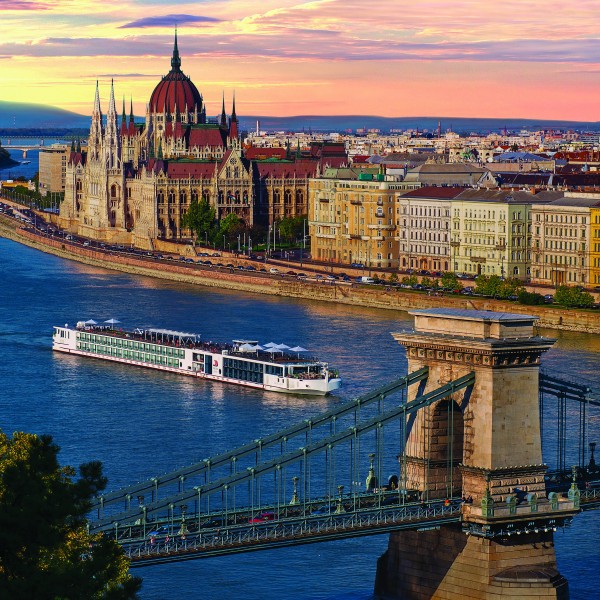
Believe it or not,
our ship docks right in front of Old Town Budapest
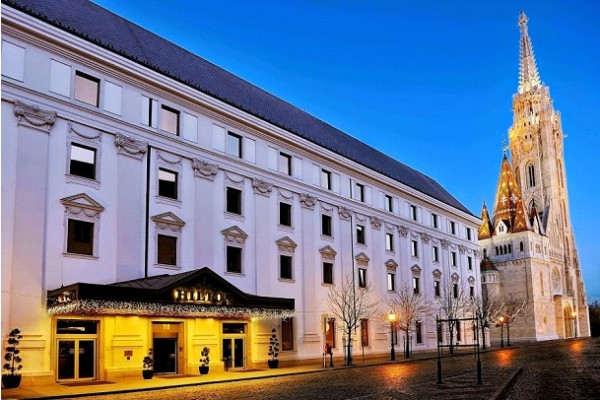
The Budapest
Hilton. Note the Matthias Church in the background
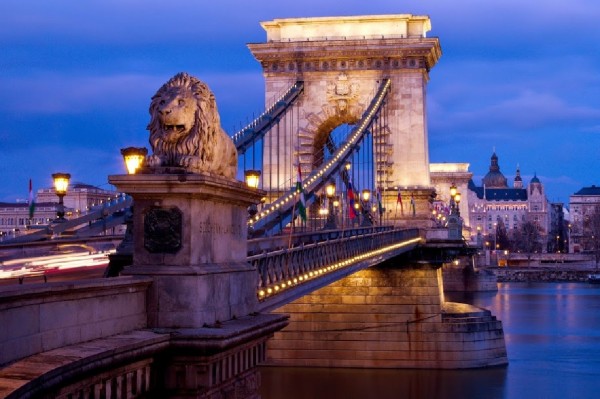
The famous Chain
Bridge is right next door to our hotel
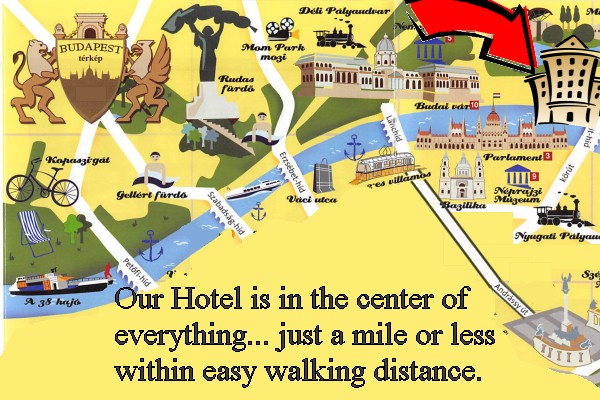
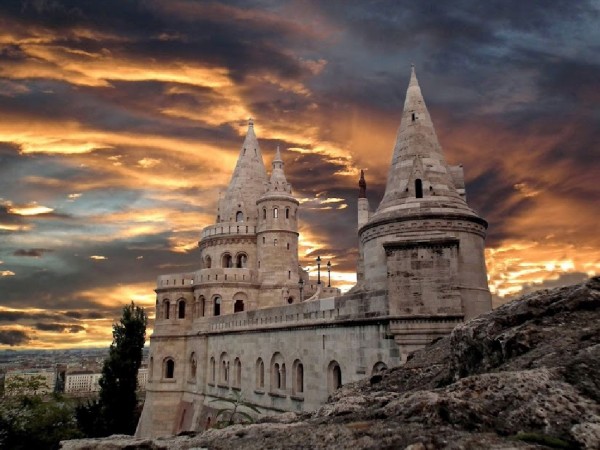
How about this for
a cool picture?
The Fisherman's Bastion is right next door to our hotel.
|
Marla's Note:
I have a favor to ask.
Please do not book the Hilton Budapest on your own. For that
matter, please do not book cabin space on the Freya
through another agent.
I prefer that you book
the cruise and the hotel directly through me. This is for your
benefit as well as mine. For example, our perks are based on
how many staterooms I sell. In 2015, two couples booked
outside our group. We missed having our own private cocktail
party by one person.
I am the person who took
the time to put this trip together. Please respect that this
is what I do for a living. I get the fairest price I can
possibly negotiate and I add no hidden surcharge.
Most of all, I want our
group to be united. If I can oversee all details, then, as the
leader of the trip, I can handle problems accordingly and I can
distribute all information in a timely fashion.
Thank you for respecting
my wishes.
Marla Archer
|
Custom Air
Travel
Some of you
might have special travel concerns. In this case, I
suggest you consider using
Viking
Custom Air.
Viking Custom Air is an
exclusive custom air department designed
for guests who have specific travel needs or special
requests.
Depending
upon your travel schedules, requests and flexibility,
Viking's team of experienced Viking Air Plus agents can
assist with the following services whether you are traveling
on economy, Premium Economy or Business Class air:
1.
Deviate from the planned route
to an alternate destination city or stay extra time
before or after your cruise or cruise-tour.
2. Stopover in another destination such as London,
Paris, Amsterdam, or a U.S. gateway
3. Nonstop flights or the most direct air service
available
4. Reservations with airlines that accept frequent flyer
mileage
5. Travel on specific airlines or air routing
6. Confirmation of flight schedules at time of
reservation; no waiting once deposit and Guest
Information Forms are received
7. Coordination of family, friends or groups traveling
together from the same or different cities
Marla's Note: Viking
Custom Air
is not offered 50 days or less before departure. A
$50-per-guest non refundable fee applies, as well as any
additional fees based on the difference between the selected
air and the air price paid.
Date or city deviations and stopover fees are typically
between $100 and $300 additional. Airlines have advised that
seat assignments are subject to change therefore are not
part of the Air Plus program.
|
 |
|
Review of the Freya:
The Freya is a super sleek ship.
It has large windows that bring in an abundance of sunlight.
Its design is contemporary with classic Scandinavian touches
that maximize light and space. Accommodates 190 passengers
at full capacity and a crew of 45.
It has quiet, environmentally friendly hybrid engines, solar
panels and an organic herb garden on the large sun deck.
The all-new Aquavit Terrace—an indoor/outdoor area at the
bow of the ship for viewing, relaxing and casual dining.
The Aquavit Terrace’s indoor/outdoor configuration has glass
walls that open to reveal scenic views on warm days. On
cooler days, the expansive windows still provide spectacular
views. The adjoining Observation Lounge has expansive
windows that showcase the river views and plenty of
comfortable couches and cozy chairs. While the lounge is
large, it can feel crowded at times and it is advisable to
get there early for a spot during lectures and briefings.
The Middle Deck lobby is a striking, light-filled, welcoming
area with colorful artwork and a staircase leading up to the
Observation Lounge. The concierge desk and a small boutique
offering Viking River gear and books are in the reception
area on the Middle Deck along with coffee and tea stations
open 24 hours a day, with cookies served in the afternoons.
The ship’s library had a great selection of
itinerary-related books and two computers with free Internet
access
Accommodations: The 95 outside rooms and suites aboard the
Viking Freya have a functional
modernity and neutral color palette. The spaces are targeted
to today’s traveler, with plenty of plugs (including
American outlets), reading lights, a hair dryer, a telephone
and a refrigerator.
Each stateroom on the ship features plenty of storage, from
the typical large space under the bed for luggage to a
spacious closet and eight separate additional drawers. Extra
pillows are available. Bathrooms are small but comfortable,
with L’Occitane amenities, a bowl-style sink and plenty of
shelf space for toiletries. There’s also a large vanity and
mirror/
French balcony staterooms featuring floor-to-ceiling sliding
glass doors.
Turndown service is offered each night in addition to
morning housekeeping, and printouts of the next day’s
itinerary and other important information. The flat-screen
TV provides a sizable selection of included entertainment,
from itinerary-themed movies and documentaries to Hollywood
hits.
Fine cuisine, exemplary service and immersive, culture-rich
itineraries.
Al fresco dining aboard Viking Freya--
Imagine waking as the mist rolls off the river,
stopping in the lounge for a frothy cappuccino, and heading
out to the Aquavit Terrace to silently cruise through the
early morning light. That is one definition of a Viking
happy hour.
Another
one is in the more traditional sense: unwinding in the late
afternoon with a pint of beer or glass of wine, chatting
with friends and enjoying a delicious light bite. With the
Aquavit Terrace equipped with grills and plentiful seating,
each of these al fresco “happy hours” will be yours to
indulge in.
Fine dining aboard Viking Freya:
The chefs create a variety of tasty offerings for you, with
freshly prepared seasonal local vegetables, European
specialties adapted to satisfy the tastes of the passengers,
and homemade soups prepared daily. For breakfast, choose
from selections of pastries,
cereals, breakfast meats, egg dishes, fresh fruit and
selected cheeses. At lunch, select from the soup and
sandwich bar, or a choice of entrées and dessert. And for
dinner, you are treated to a five-course gourmet menu with
regional specialties. You can also select from regional
wines to perfectly complement your meal.
There are two main dining areas: a large traditional
restaurant and the Aquavit Terrace, which serves a more
casual breakfast and lunch buffet daily. Seating is open
All meals aboard are prepared by local chefs under the
guidance of Viking's European management team
Service is lighthearted and seamless, with a wait staff that
remembers individual preferences. The dinner menu has a
large selection of rotating daily specialties from the
region, though simple chicken and fish are always an option,
as well as several dessert choices. A buffet is always
offered at breakfast and lunch, with hot items to order
All meals, coffee, tea, soft drinks, house wines and beers
with lunch and dinner are included. A Silver Spirits
beverage package can be ordered for those desiring a wider
selection of premium wines and beers. Complimentary bottles
of water are available in each stateroom and refreshed each
day. There also is no corkage fee for those who find a great
bottle of wine ashore.
On embarkation day, while the crew is preparing staterooms
for the arriving guests, you can relax in the ship’s lounge
or leave your luggage with the staff and explore
Passau on
your own. You will be given access to your stateroom around
mid-afternoon, at approximately 3:00 p.m. If you arrive
during lunchtime, a light lunch buffet will be available in
the lounge
2016 Danube River Cruise at a Glance
Included Features:
•
8 day cruise with
river-view stateroom
•
6 guided tours with audio headset
•
All meals: 7
breakfasts, 5 lunches, 7 dinners, featuring regional
specialties
•
All lunch and dinner meals include
complimentary wine, beer and soft drinks.
•
Welcome Cocktail Reception and Dinner
•
Captain's Farewell Dinner
•
Visit 4 UNESCO World Heritage Sites
|
Group Pricing is
as follows: |
|
Category A:
|
Veranda Upper Deck 205 sq.
ft. full-size veranda |
$3830 per person |
|
Category B:
|
Veranda Middle Deck 205 sq.
ft. full size veranda |
$3530 per person |
|
Category C:
|
French Balcony
Upper Deck
135 sq. ft. |
$3330 per person |
|
Category D:
|
French Balcony Middle Deck
135 sq. ft. |
$3030 per person |
|
Category E:
|
Standard Riverview Main Deck
150 sq. ft. |
$2430 per person |
Marla's
Special Note:
Viking offers Past Guest discounts.
$200 per
person for travel within one year of sailing.
$100 per person for travel over one year of
sailing.
New Guests:
$200 off per person discount for Category A and
B
|
Staterooms are
confirmed and cabin numbers are assigned when a deposit of
$500 per person (plus travel insurance, if applicable) is
received.
I encourage you to confirm your cabin as soon as possible.
The pricing that I am offered will be recalled when the the
ship occupancy level within that category is classified as
"sold out".
All bookings must be made through Marla Archer.
|
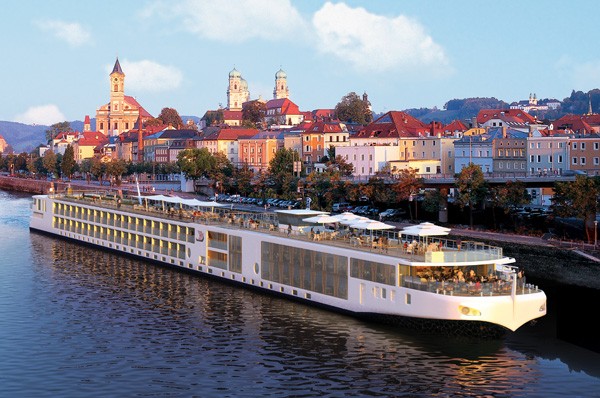
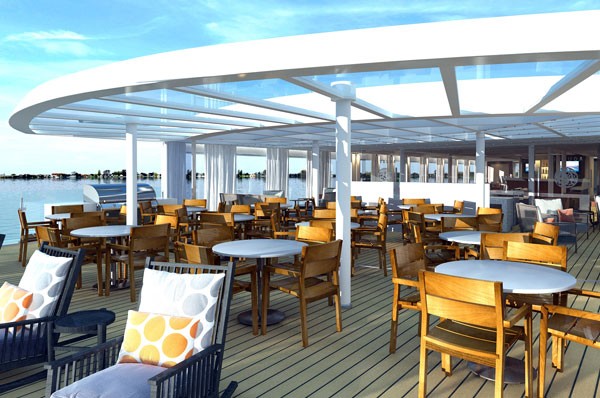
Aquavit
Terrace
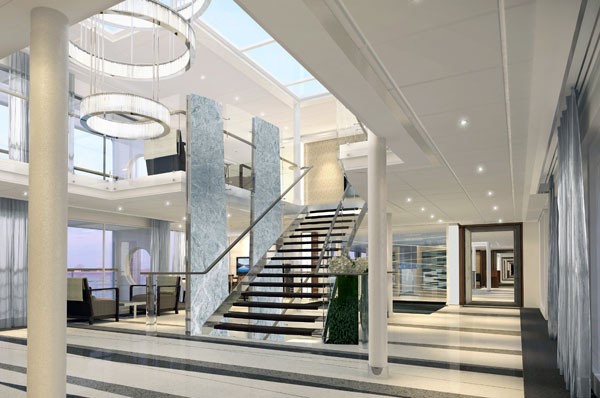
Main Lobby
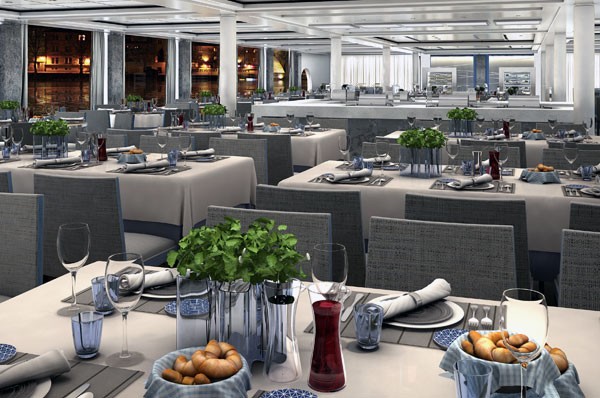
Main
Dining Room
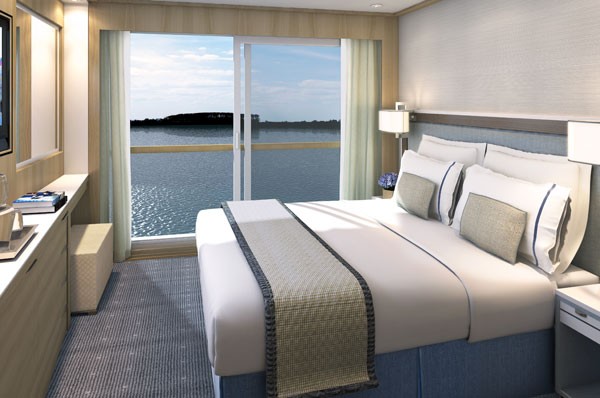
French
Balcony

Dance Area
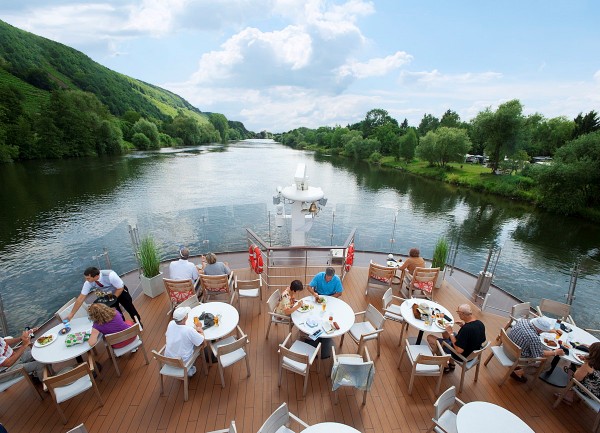
Outdoor
Dining Area |
|